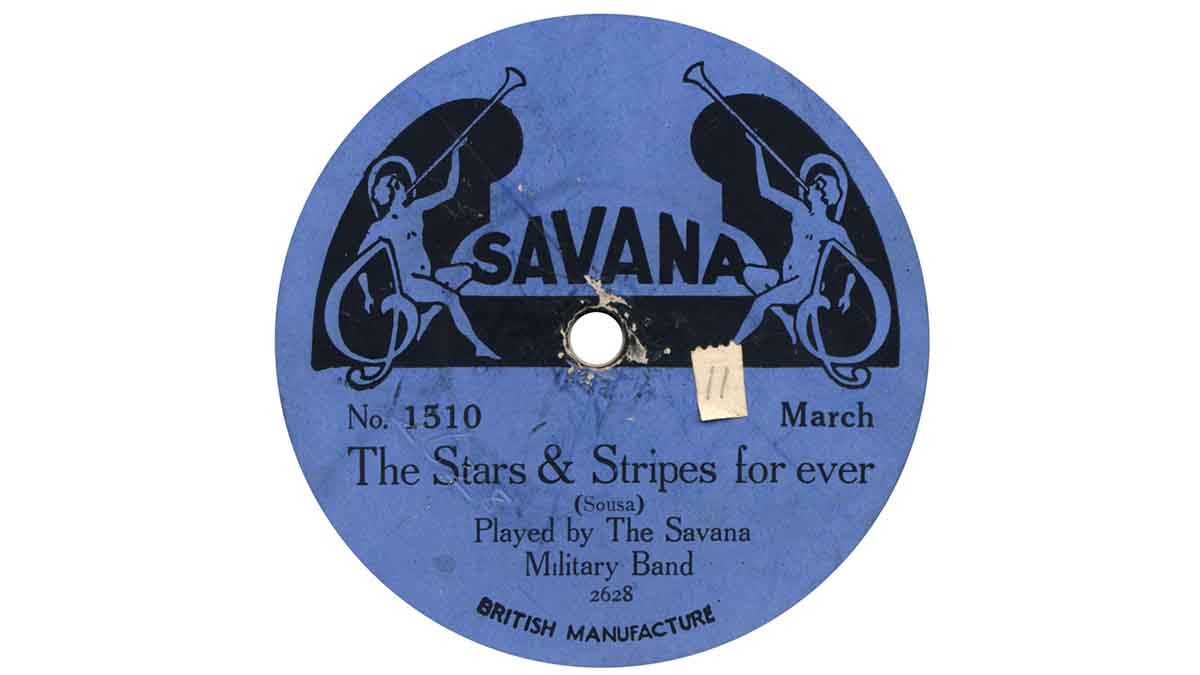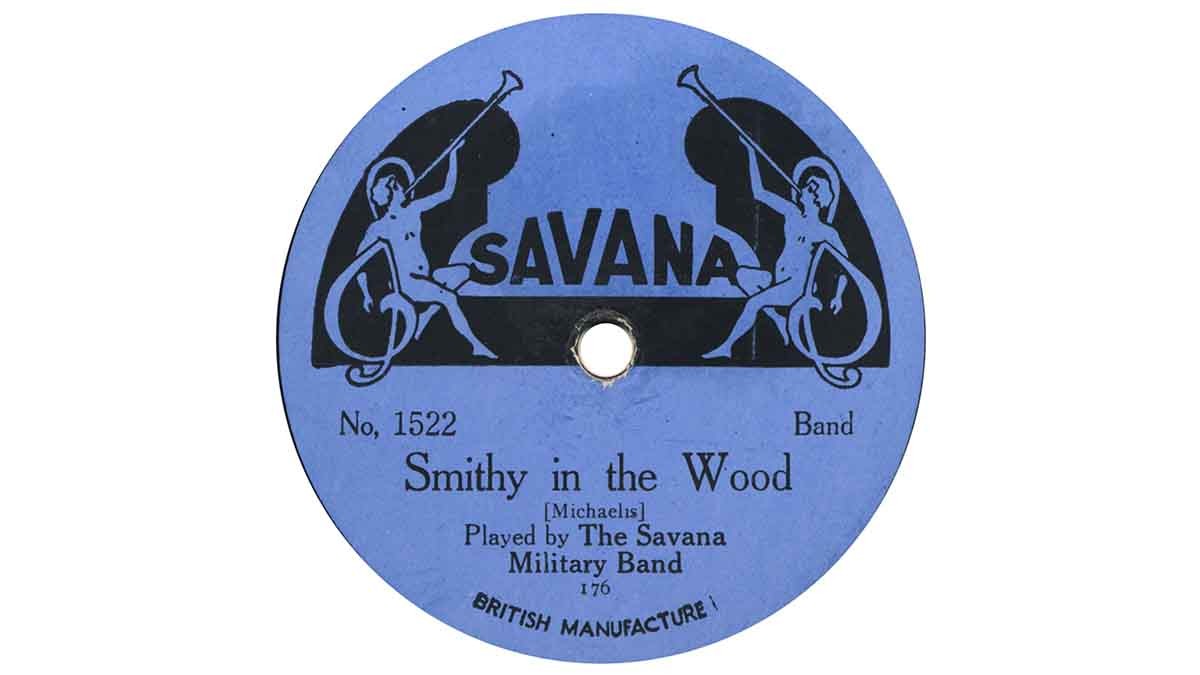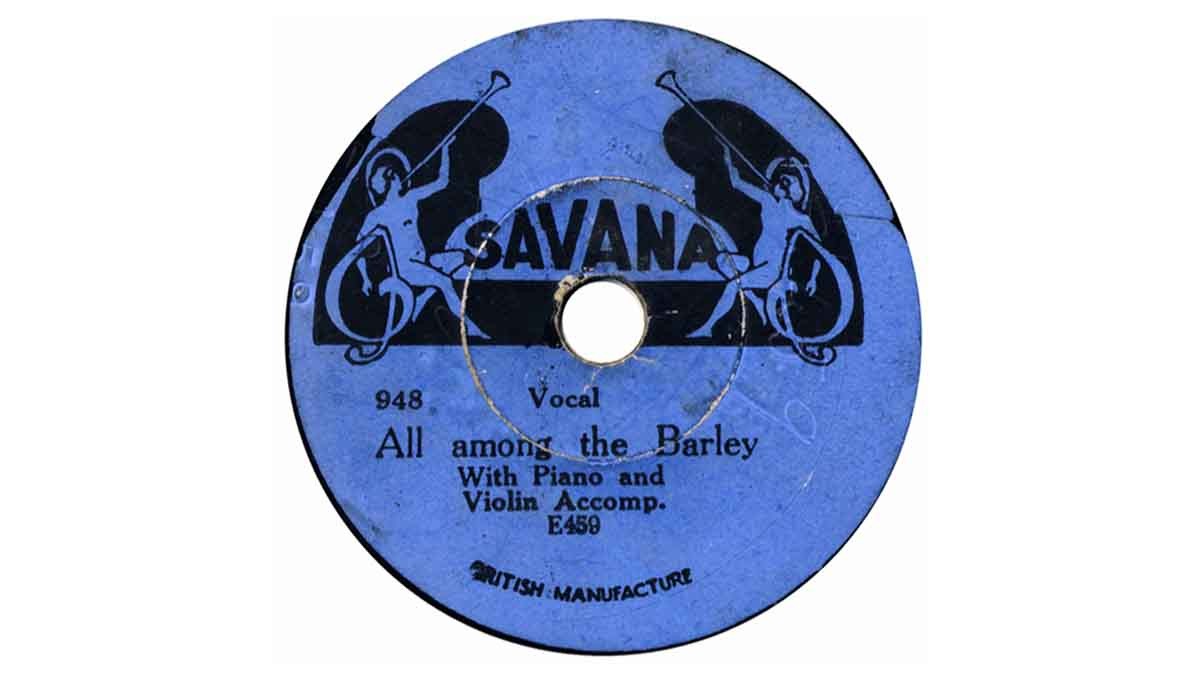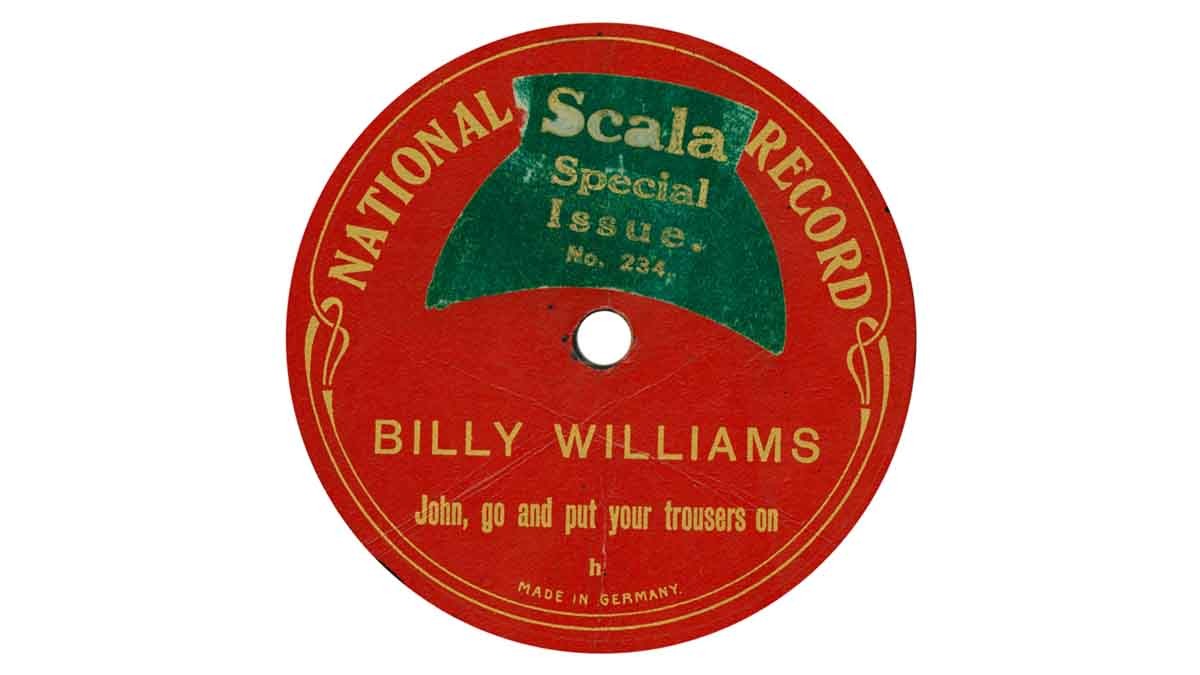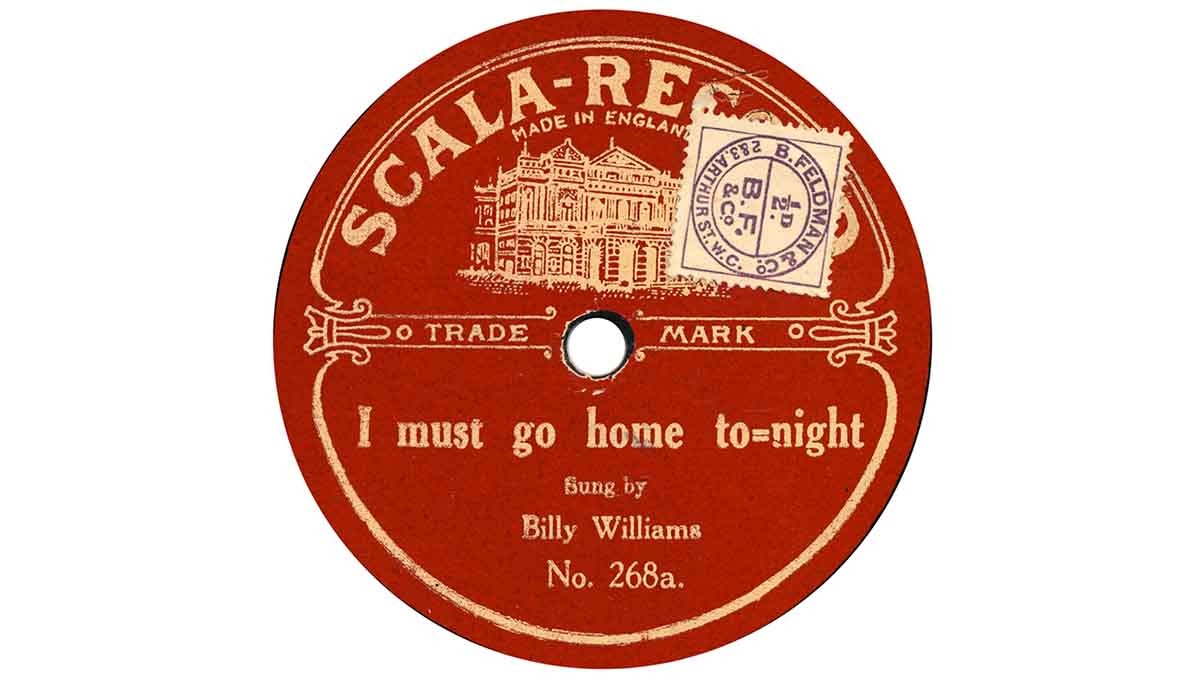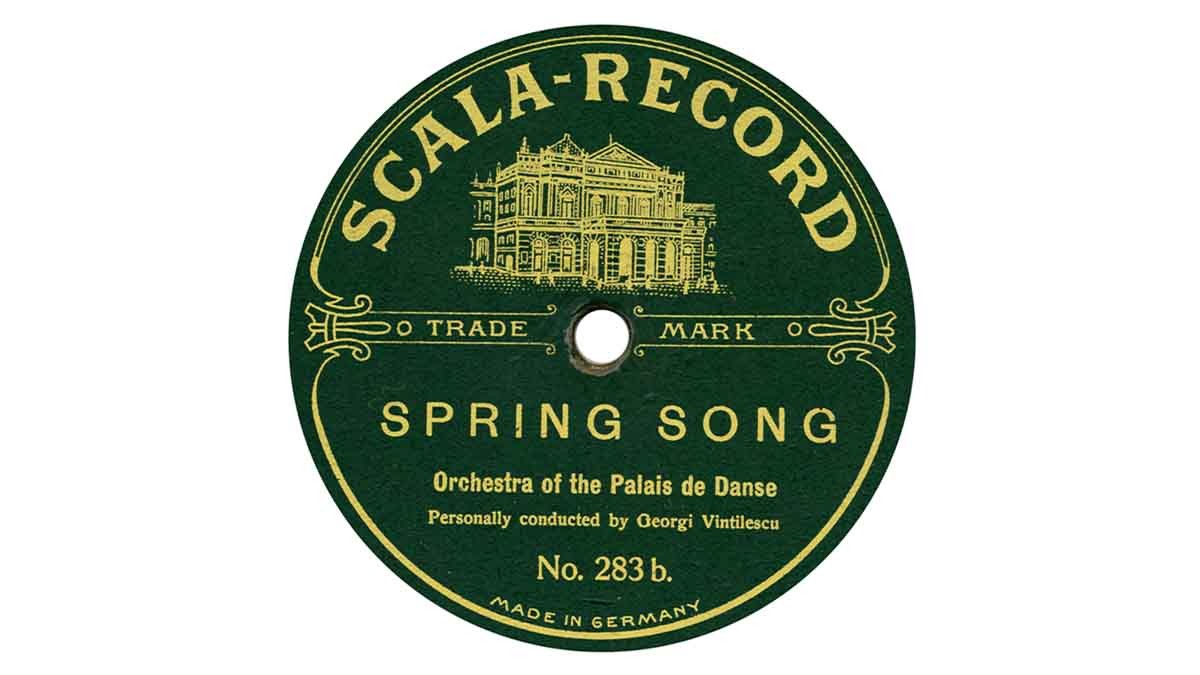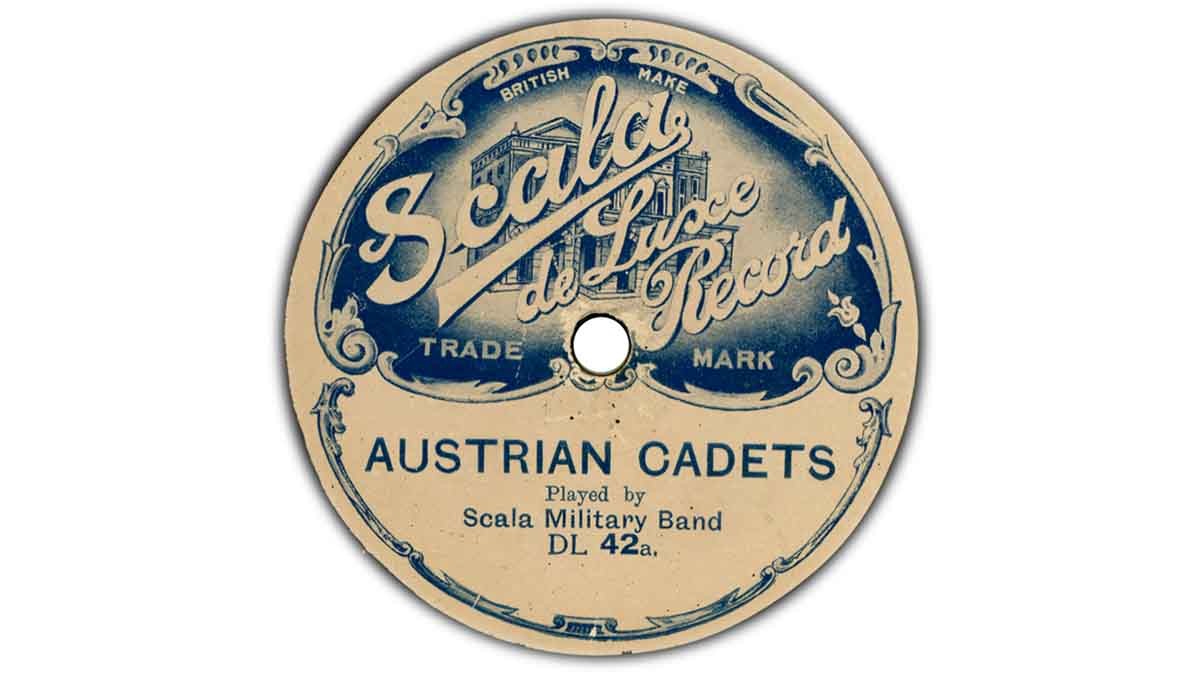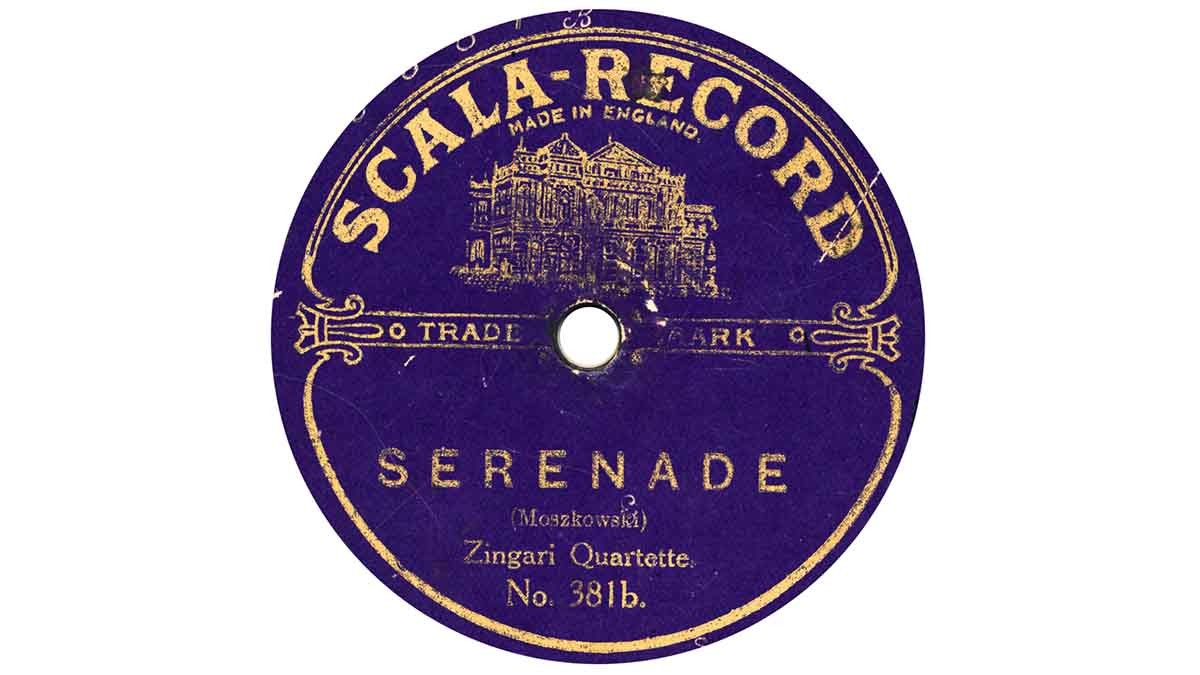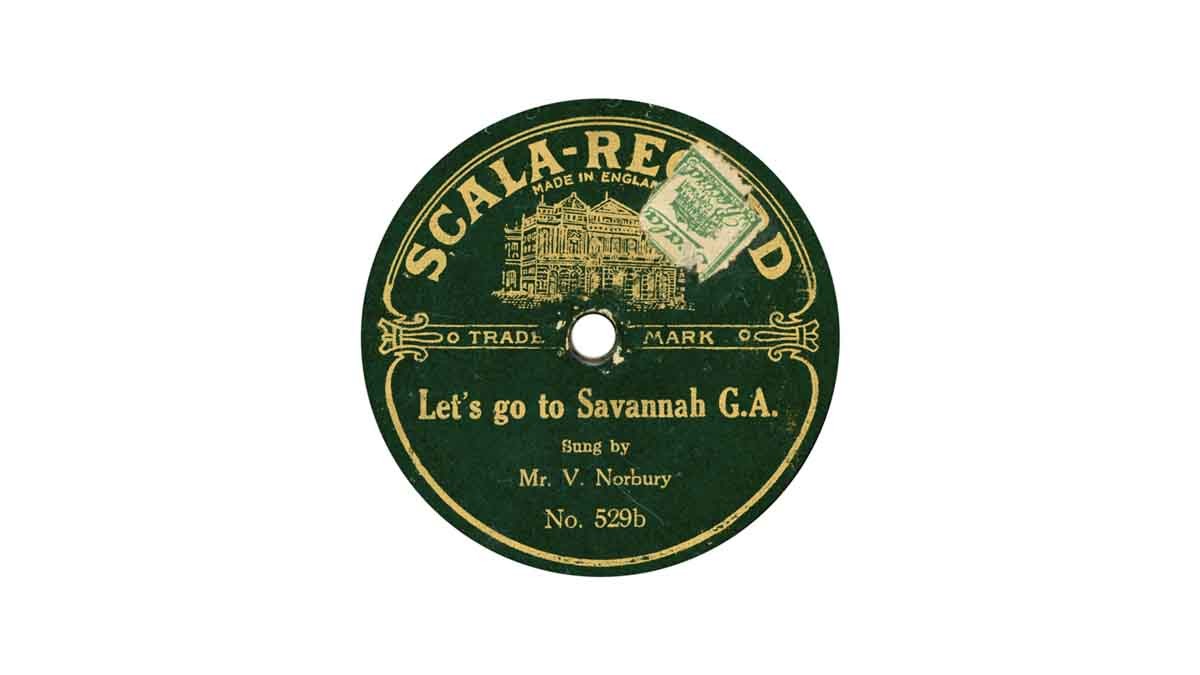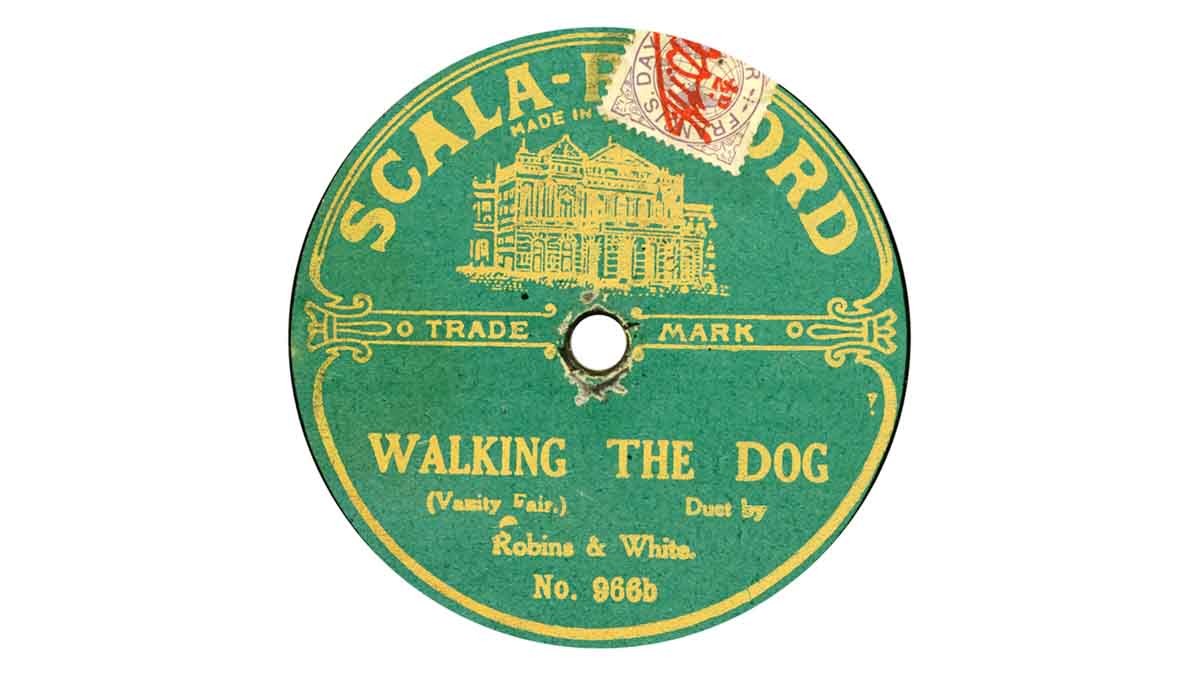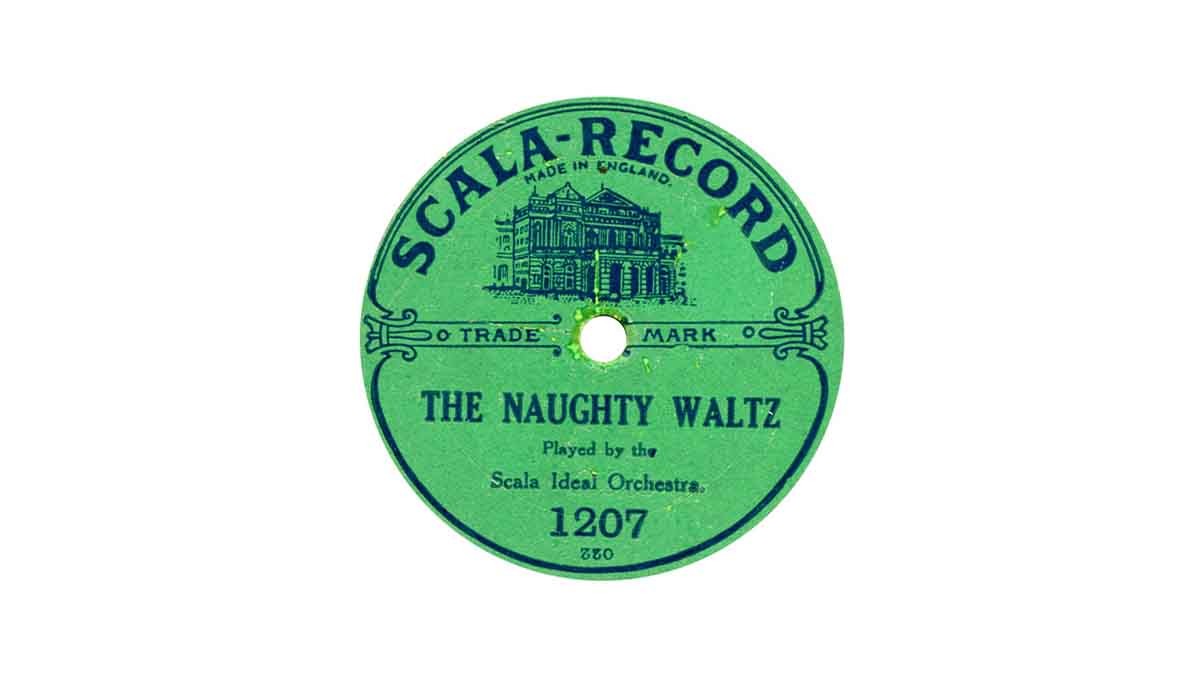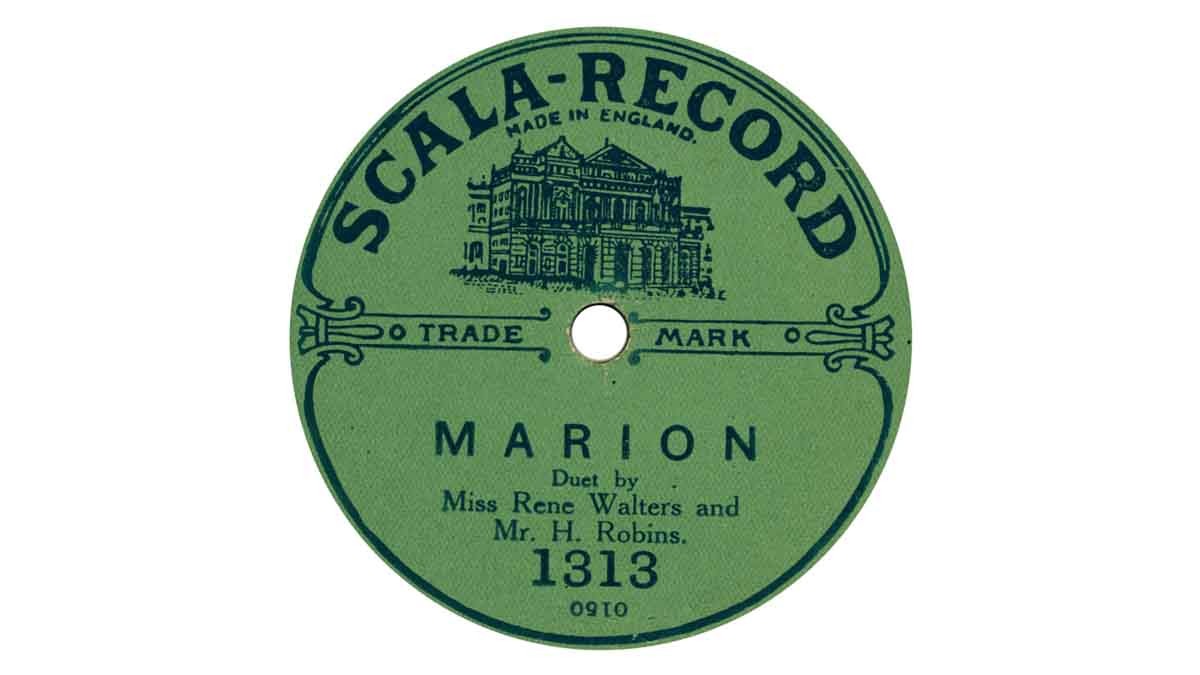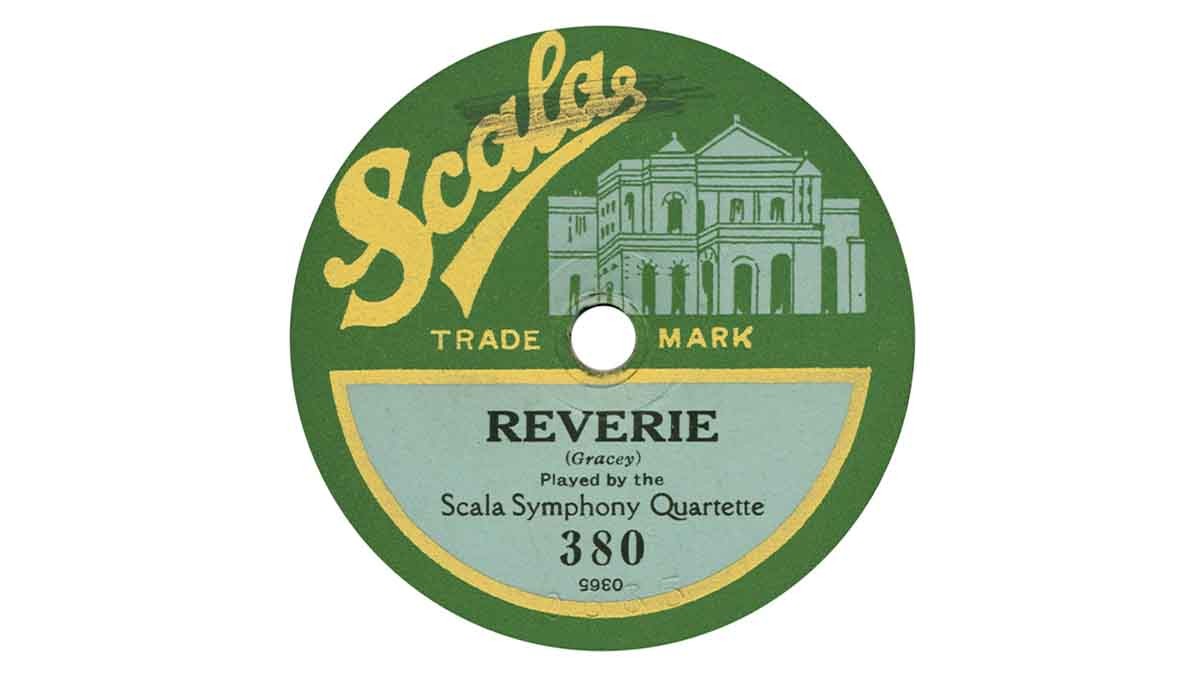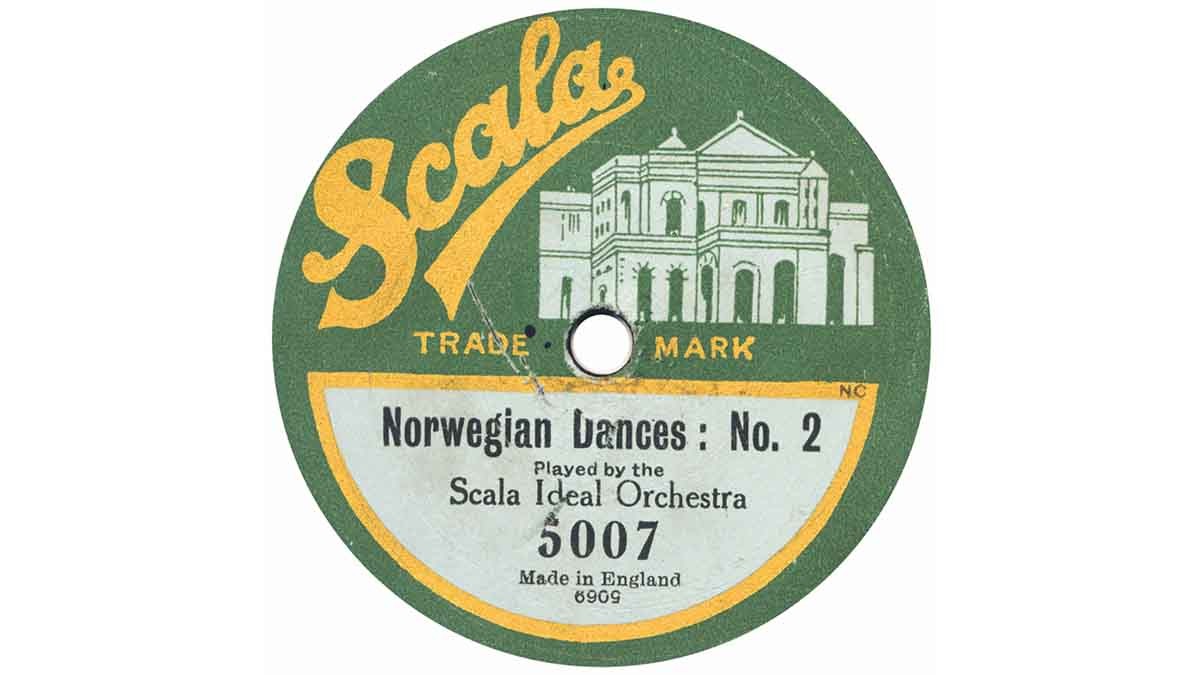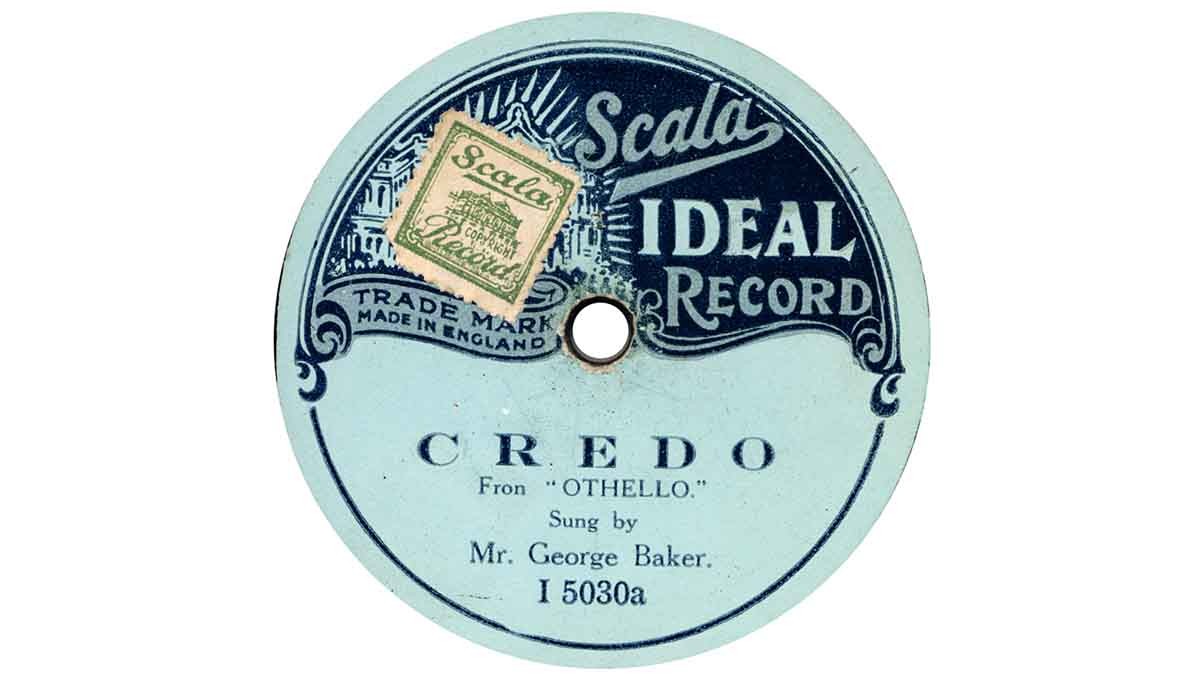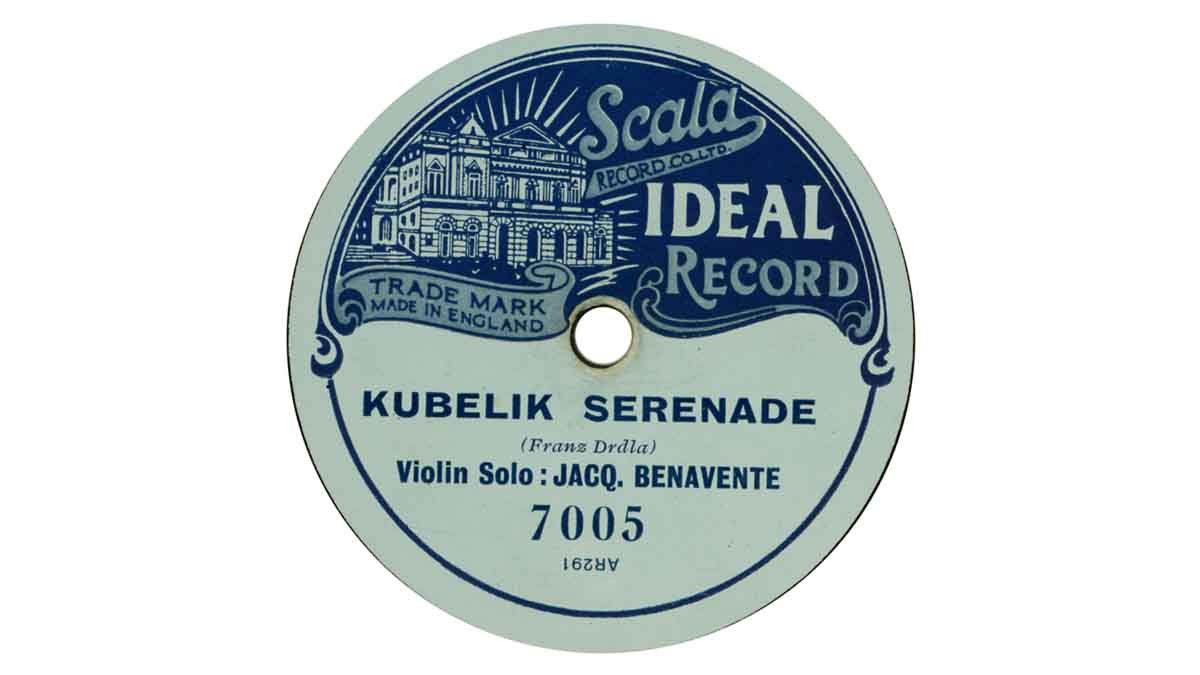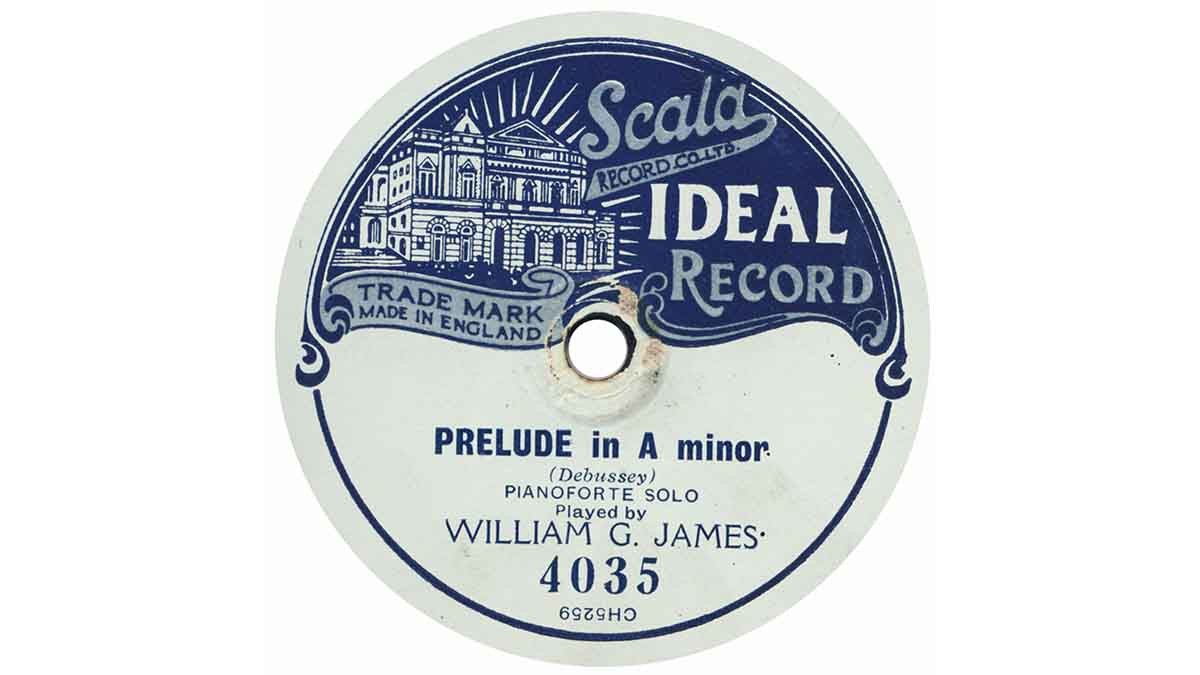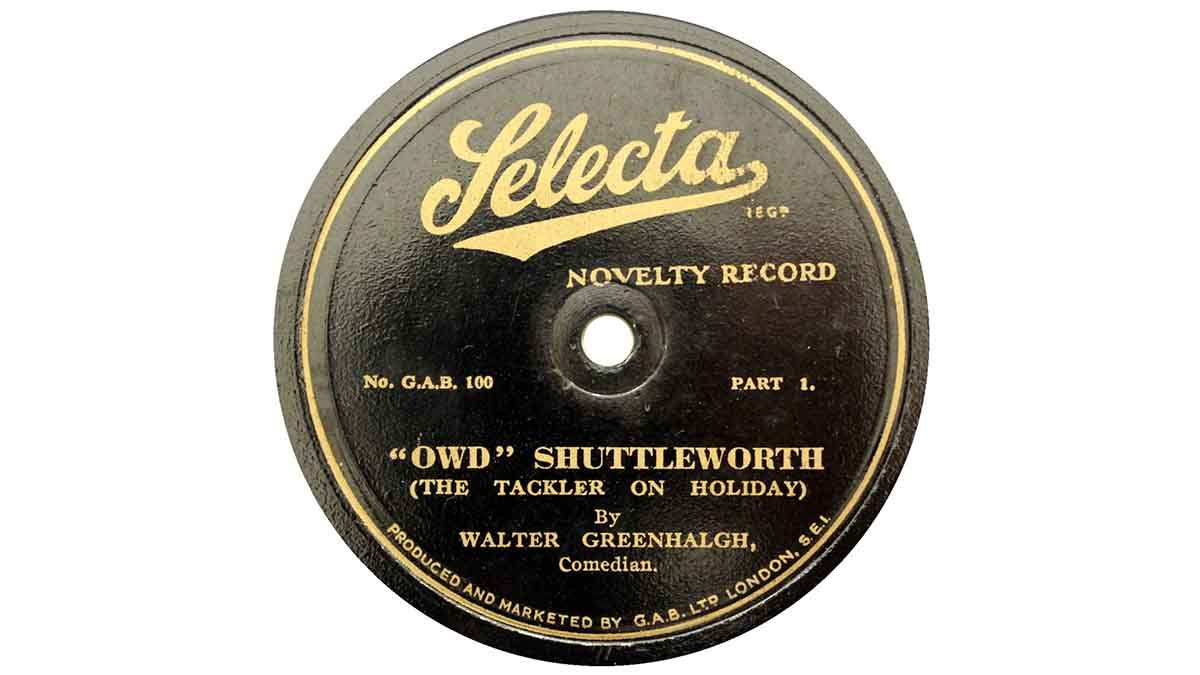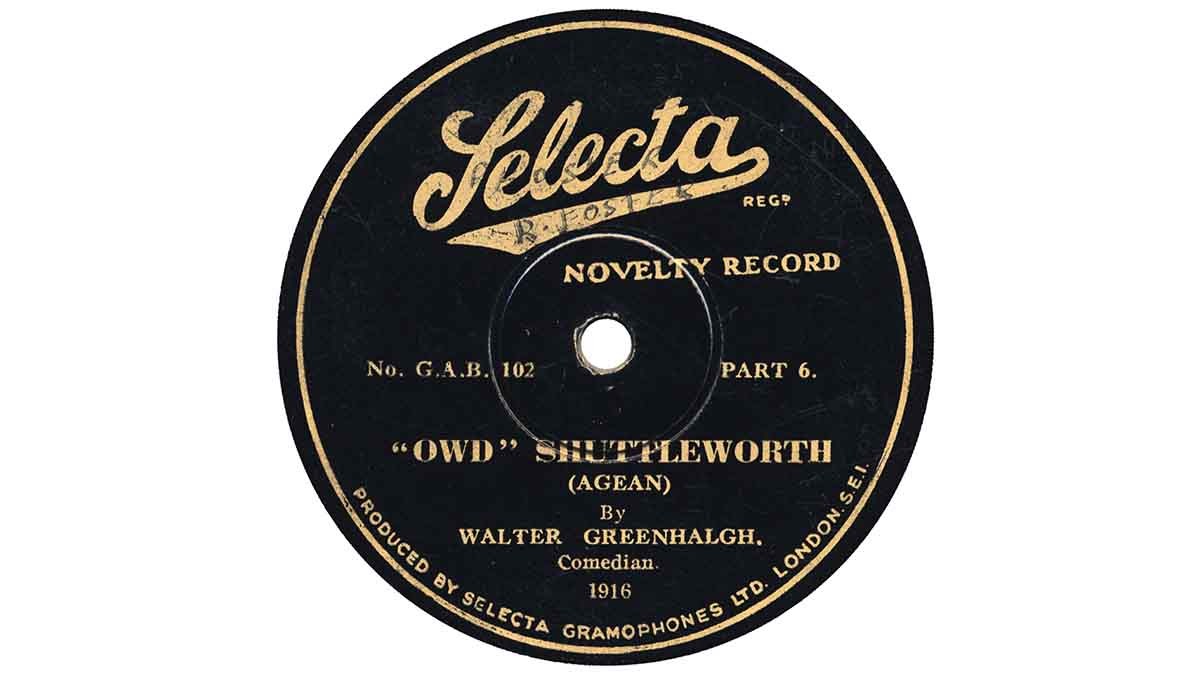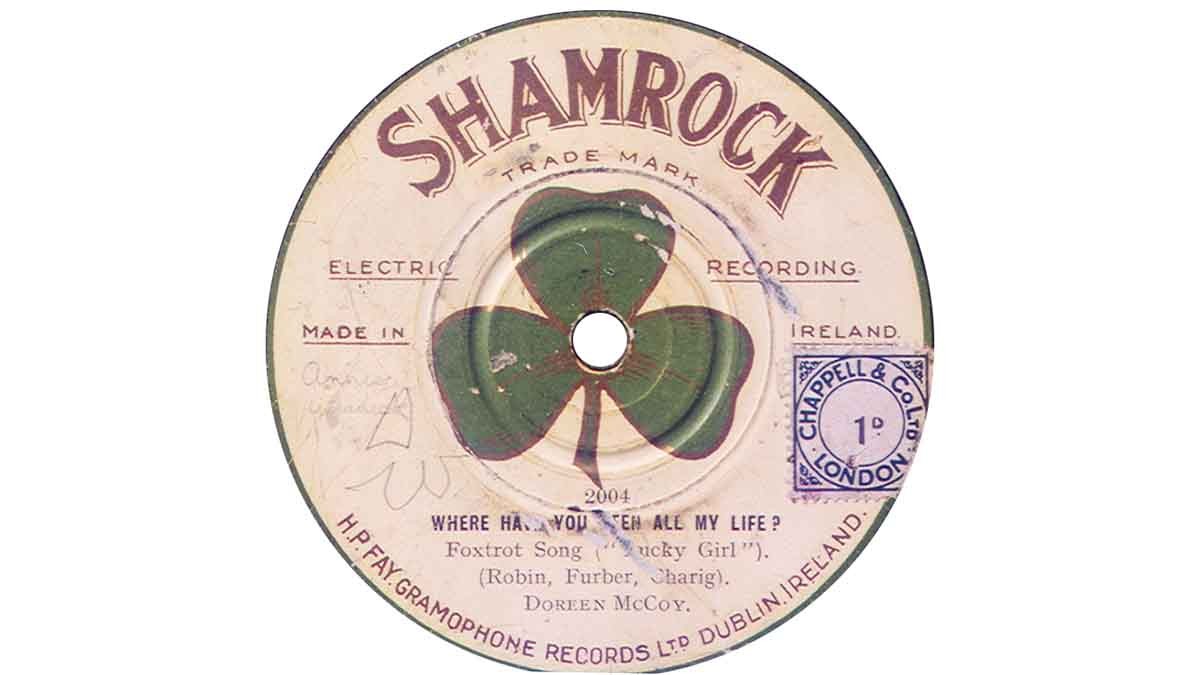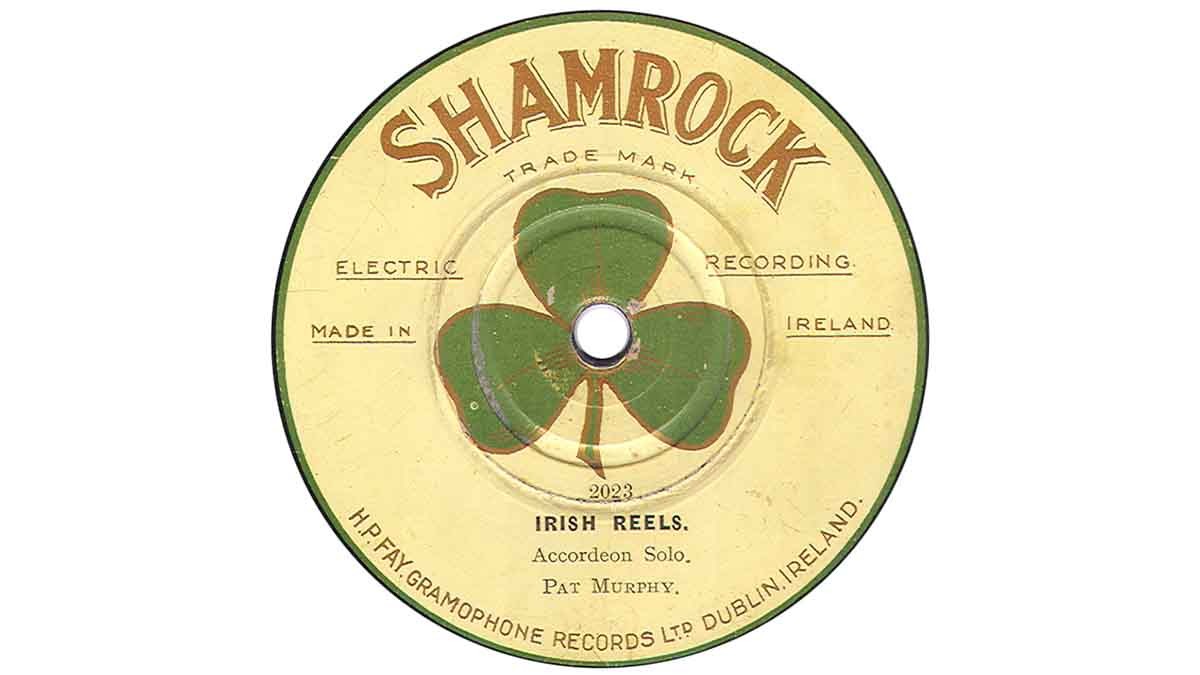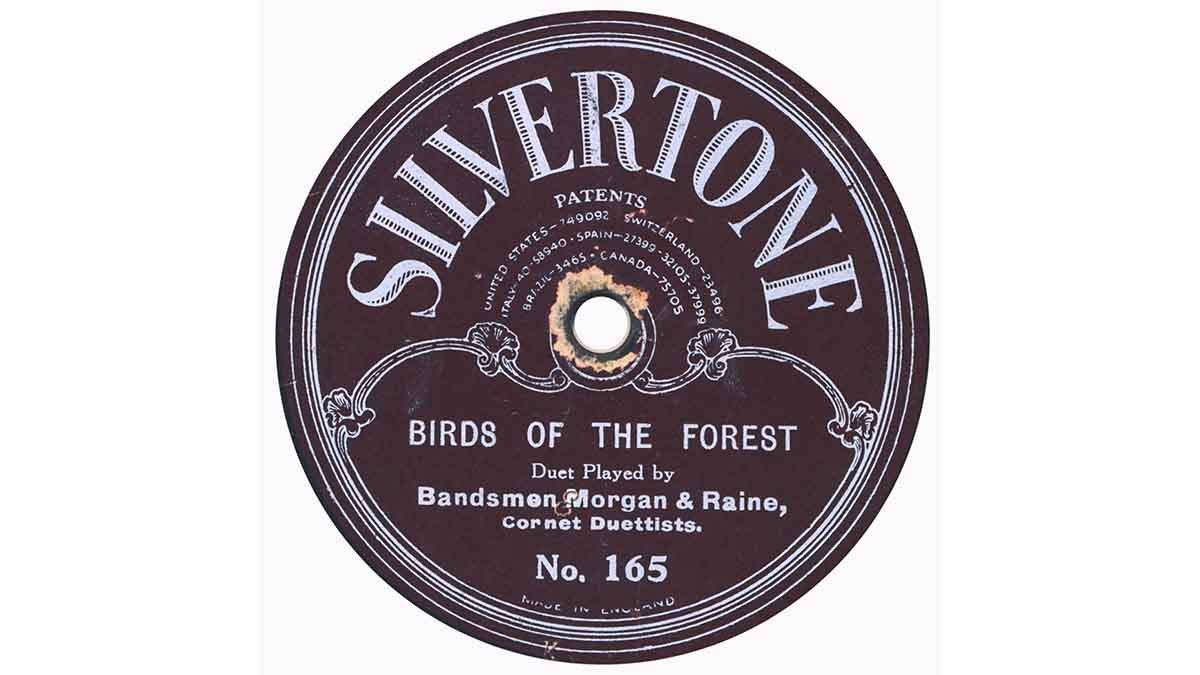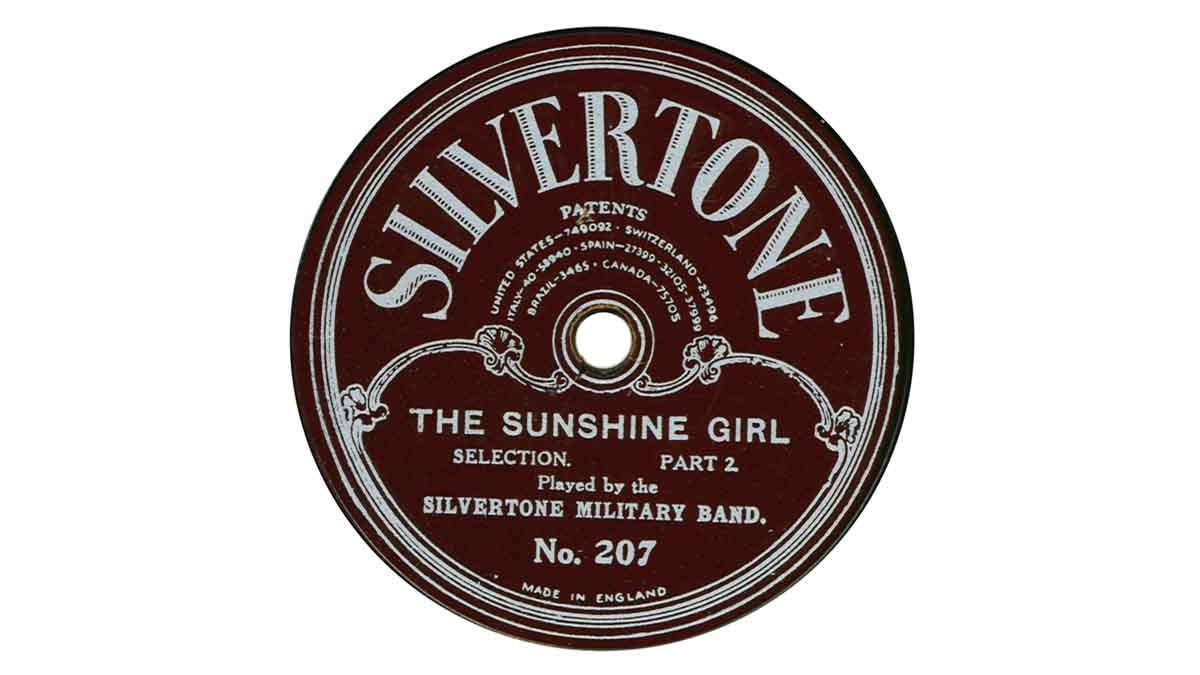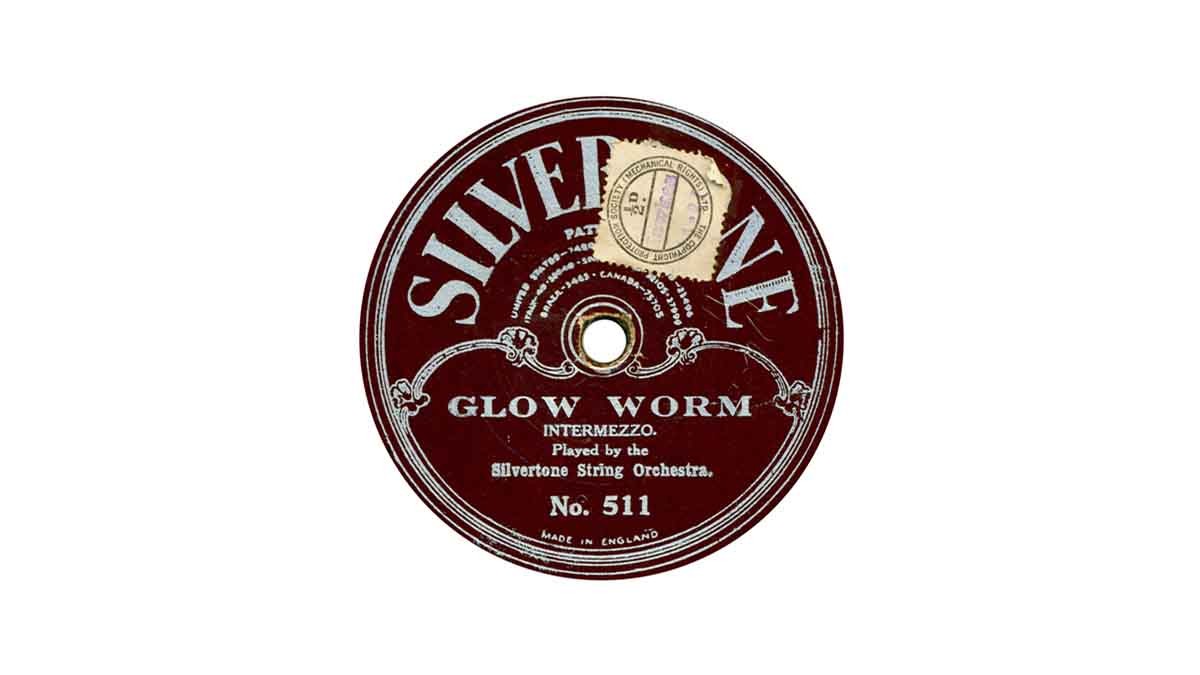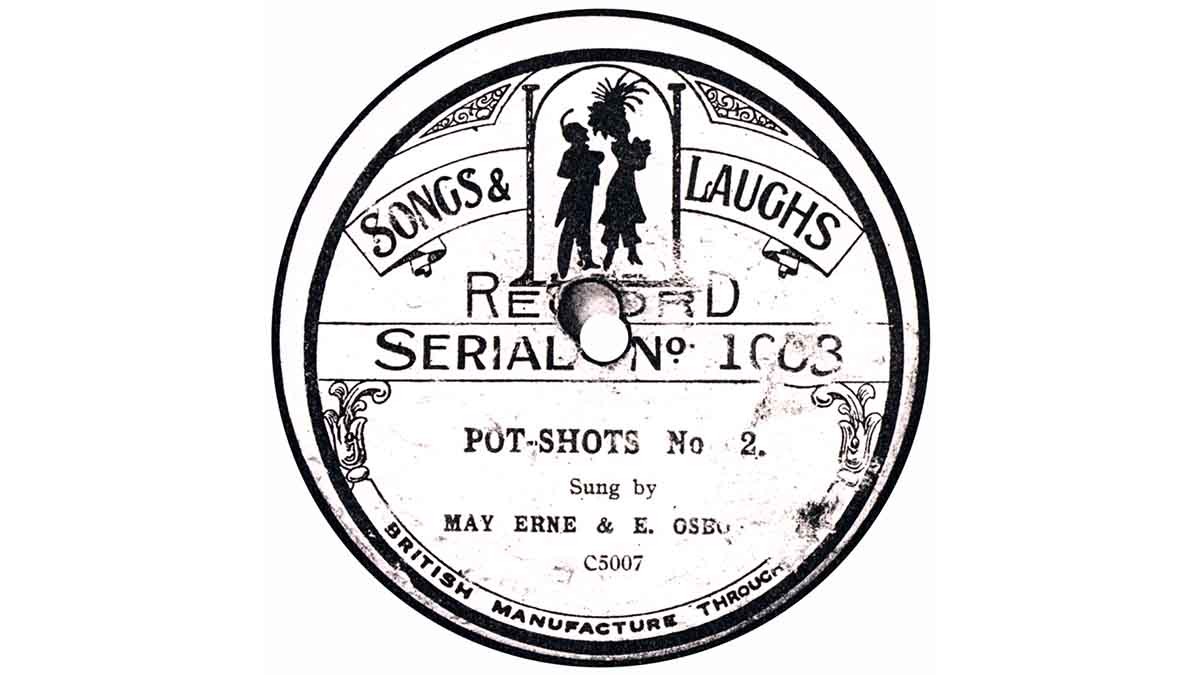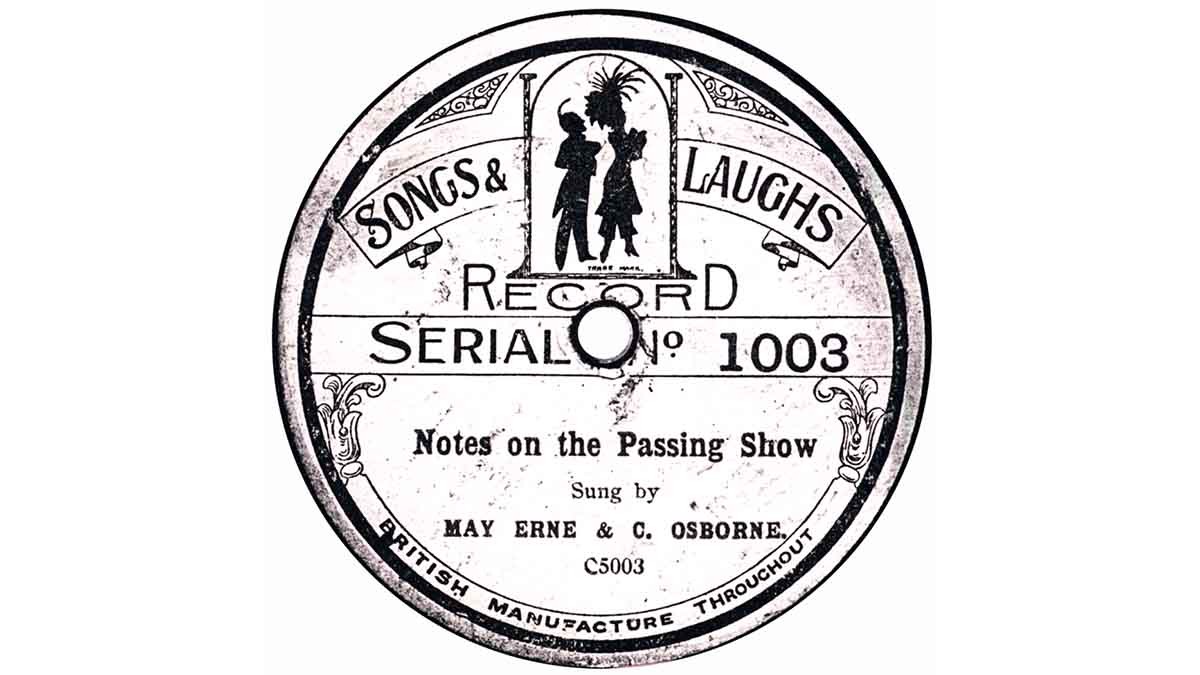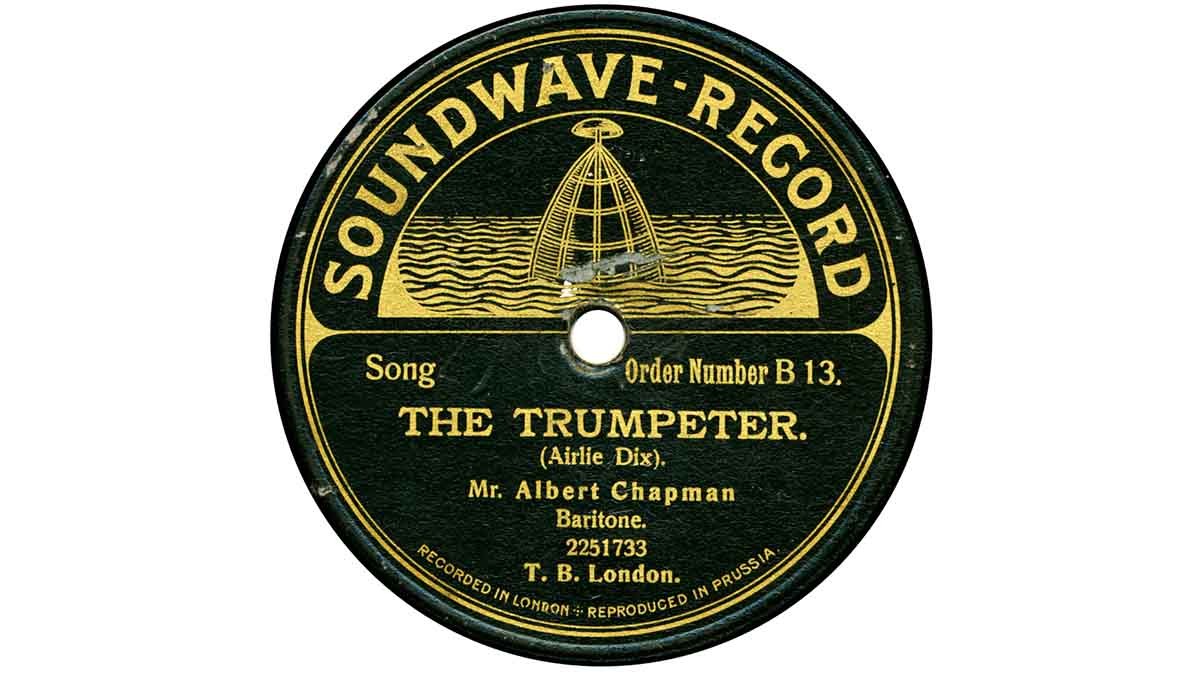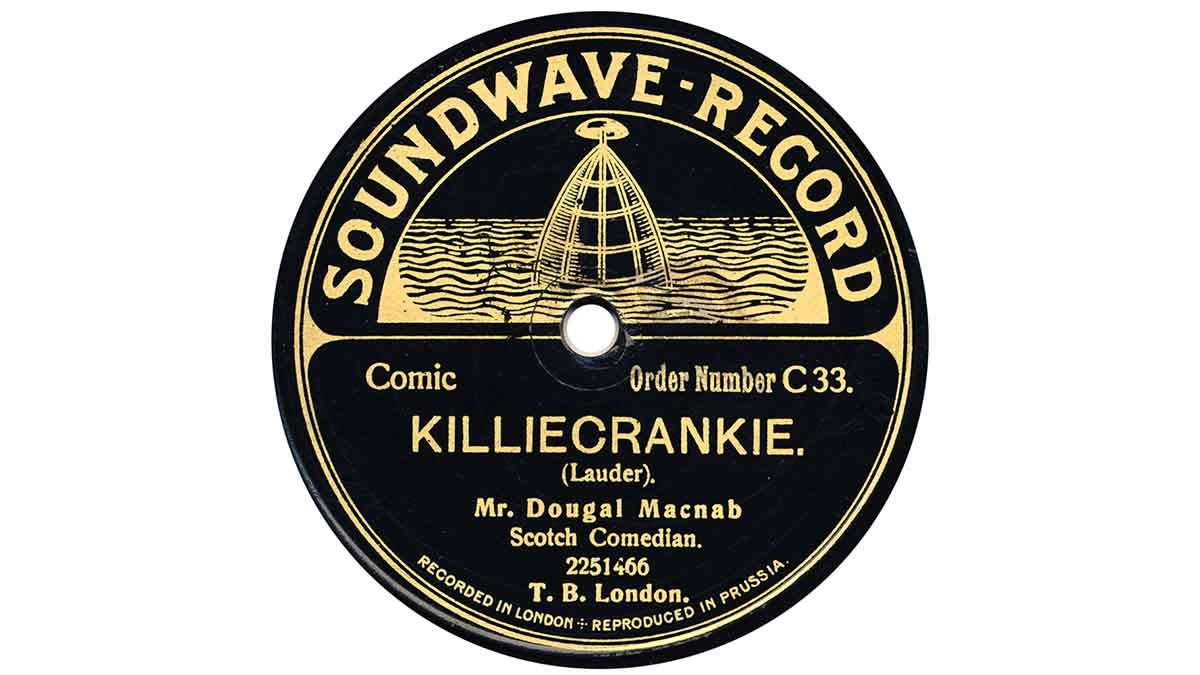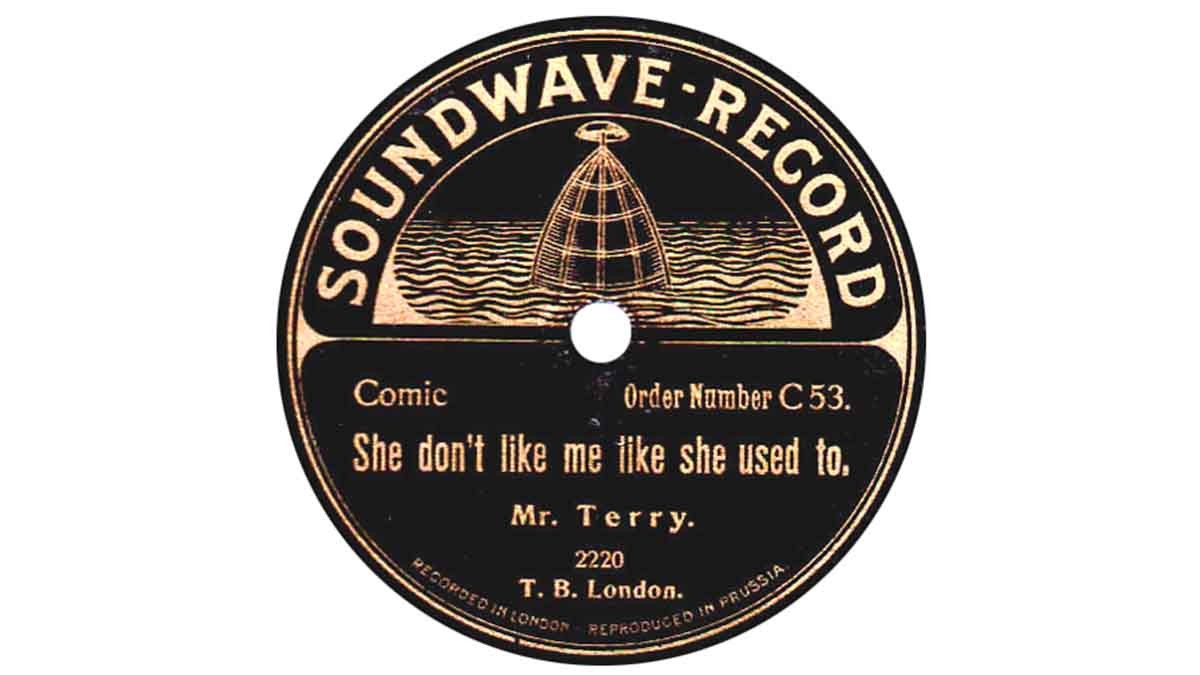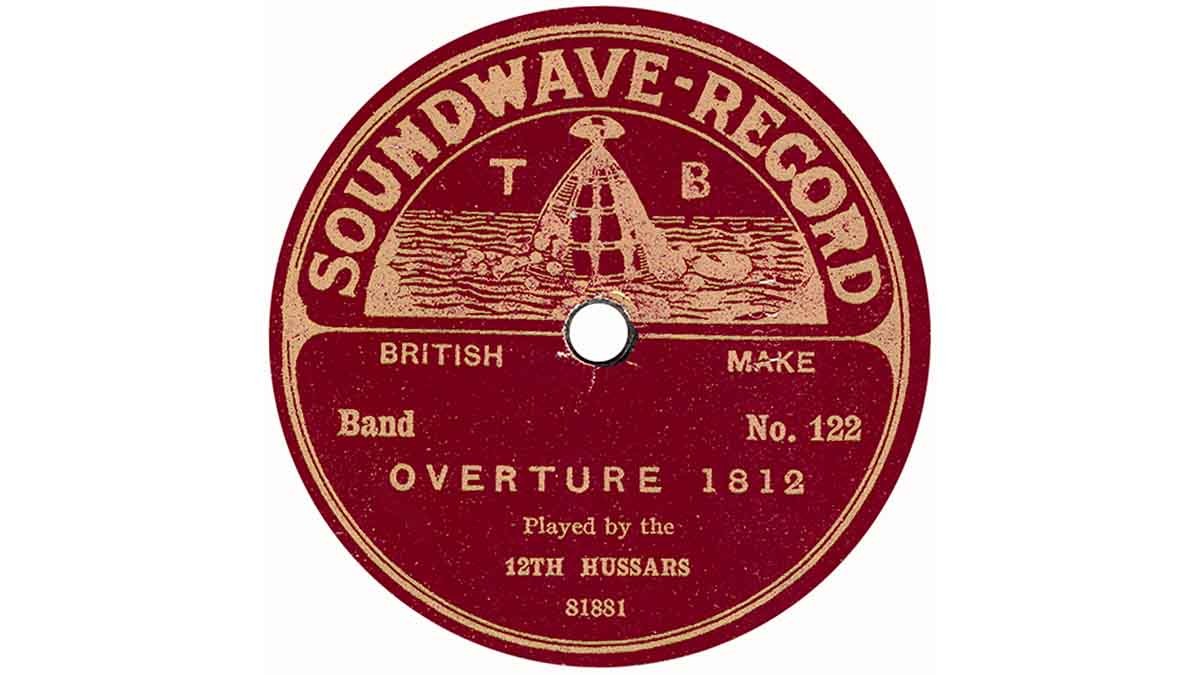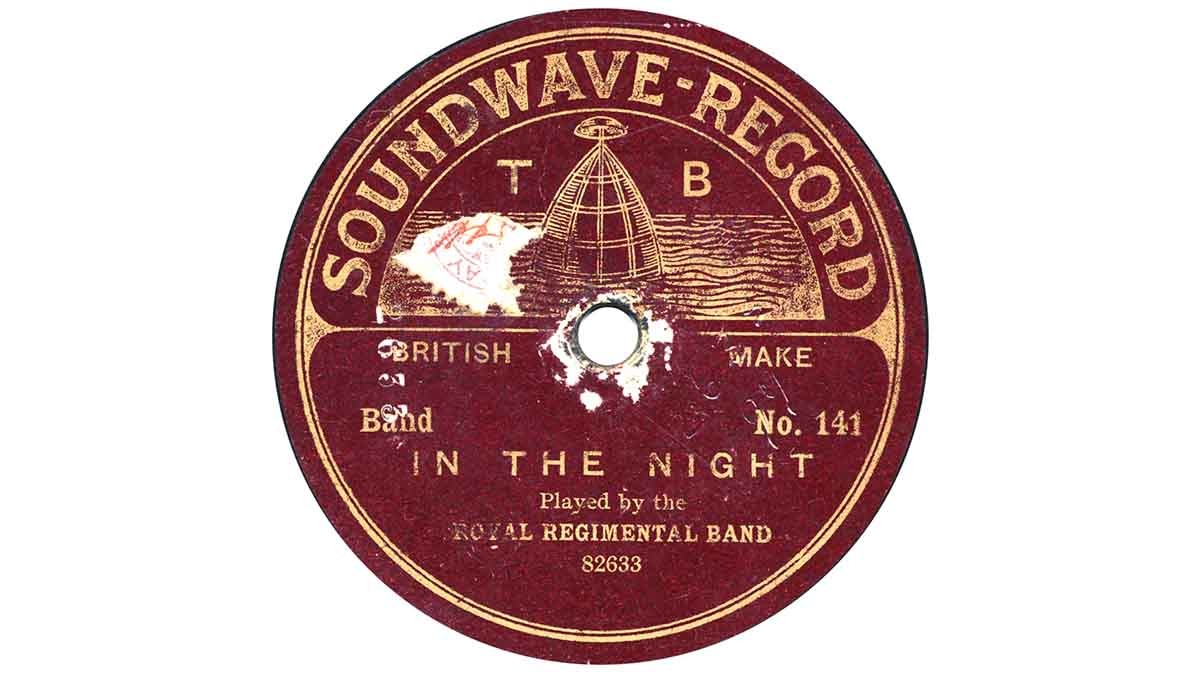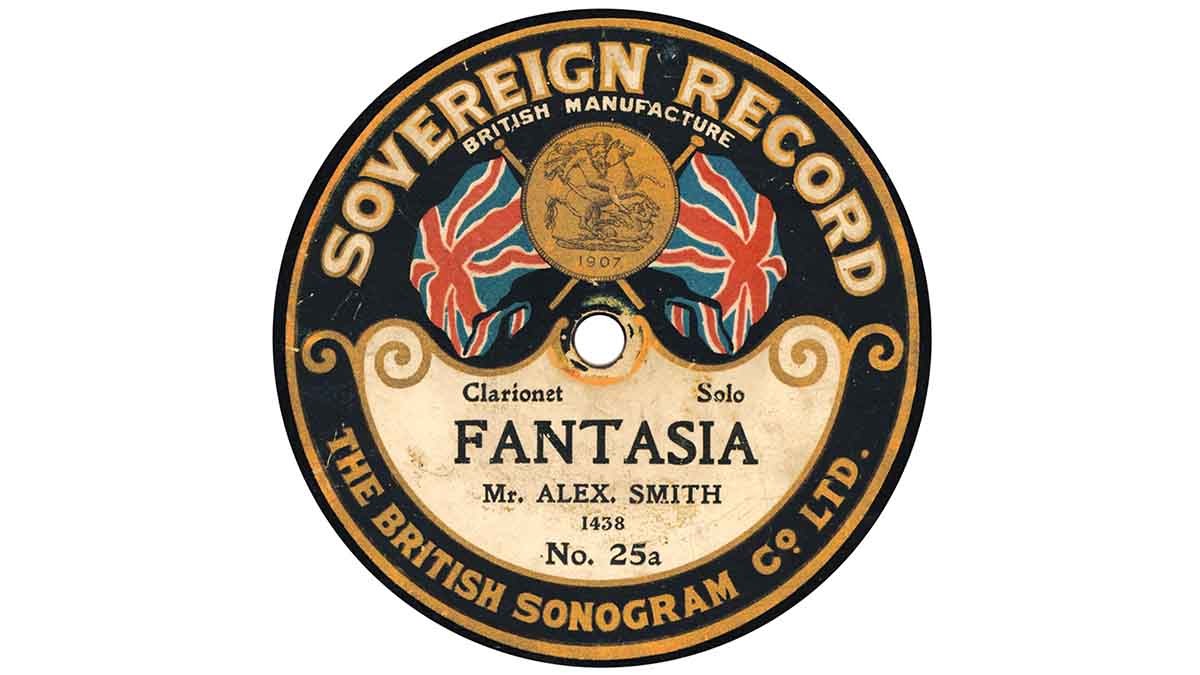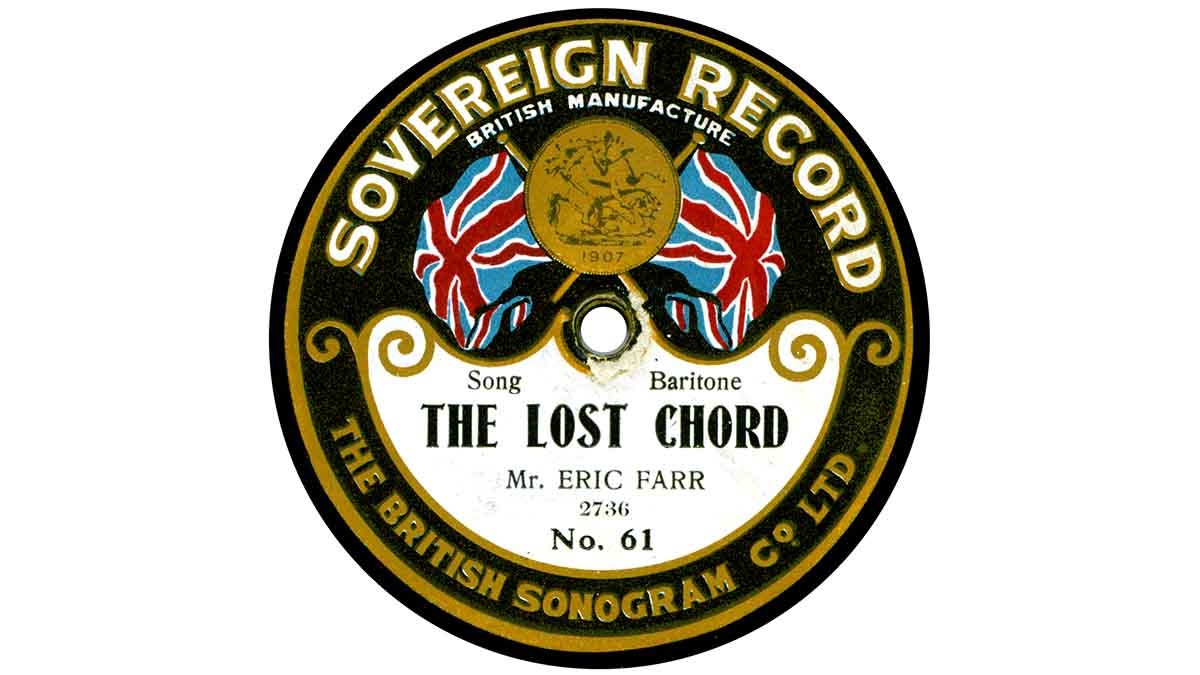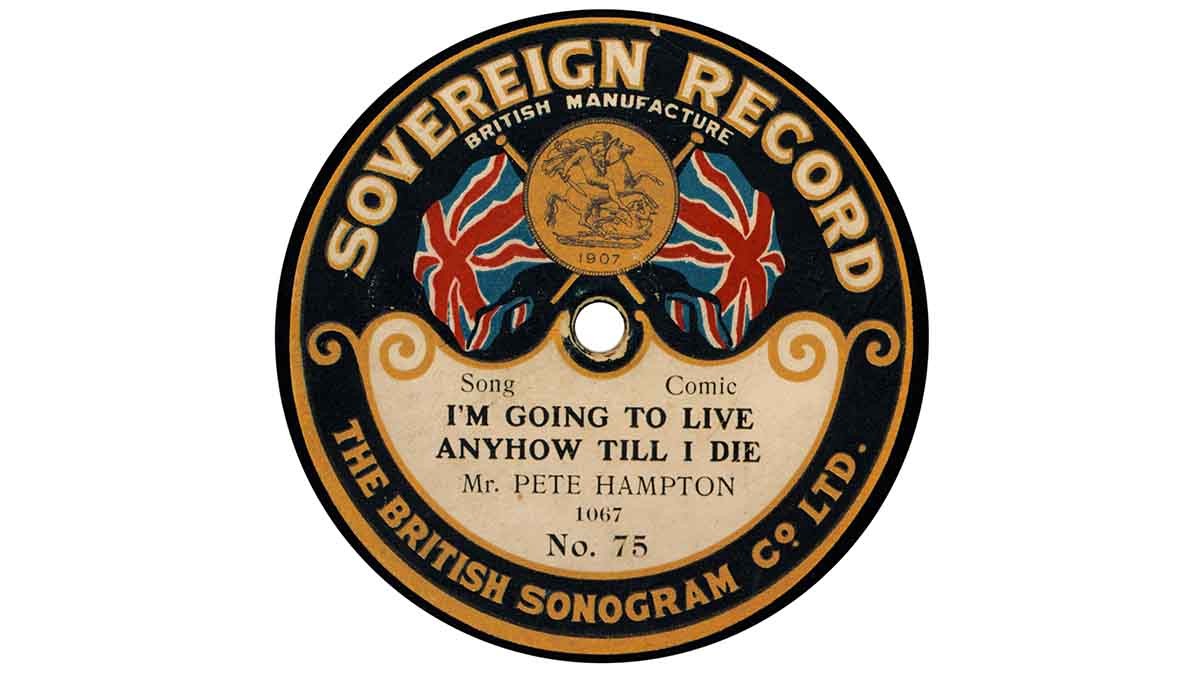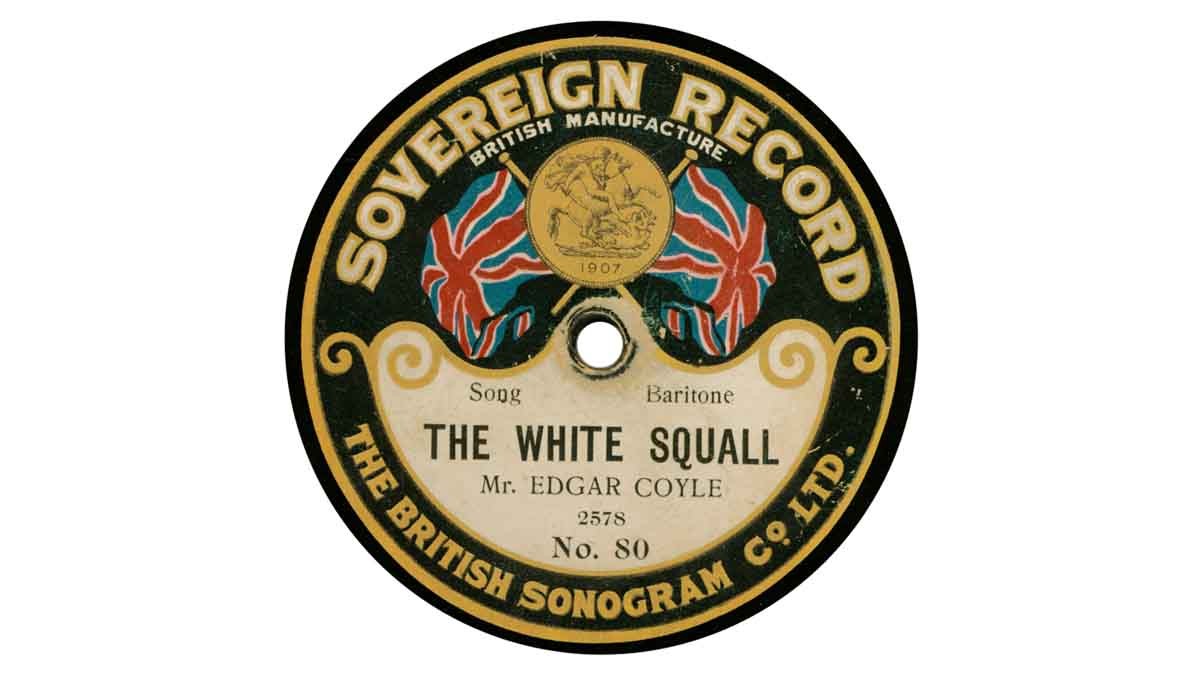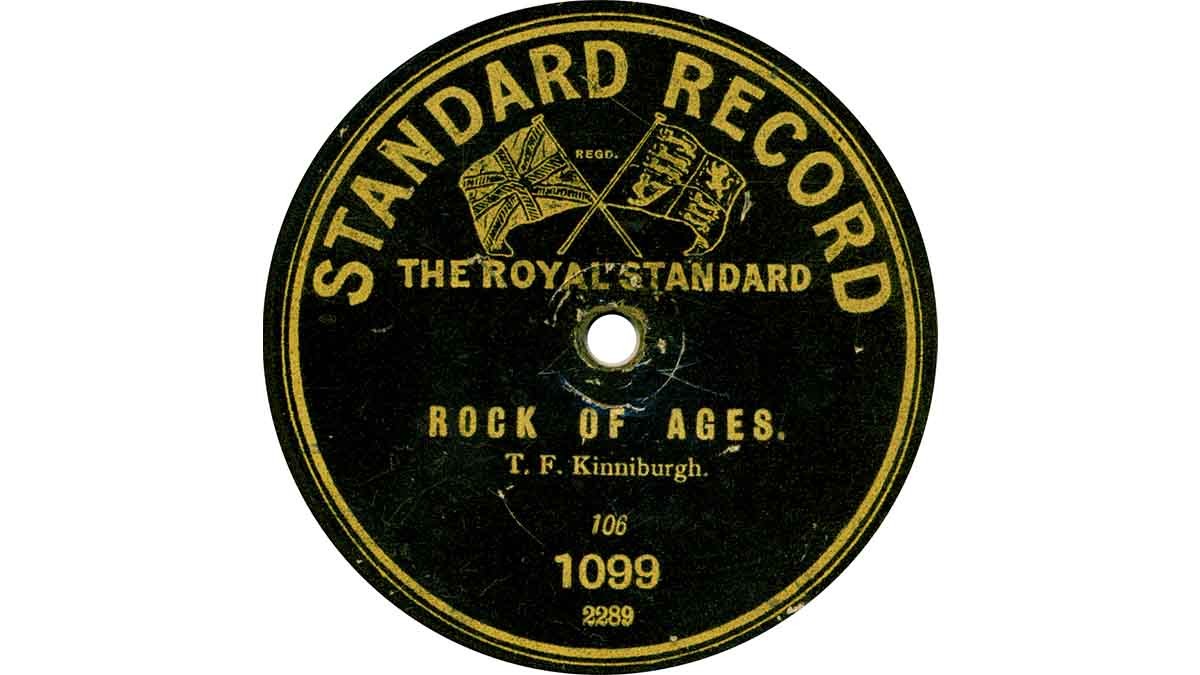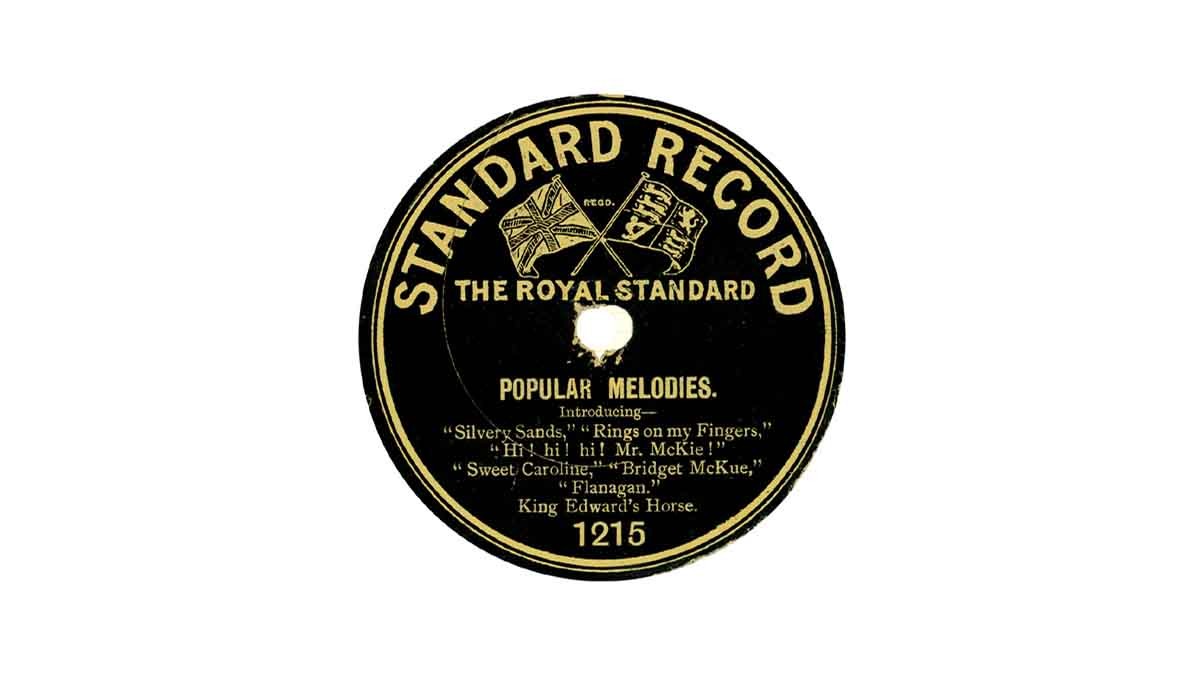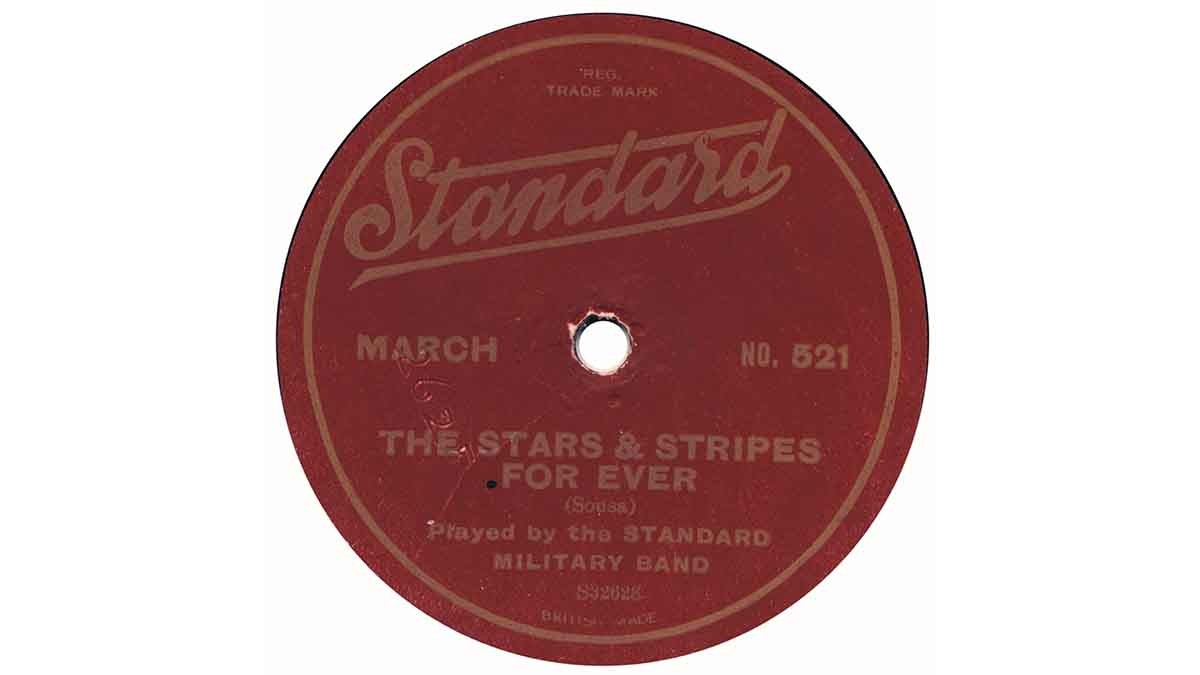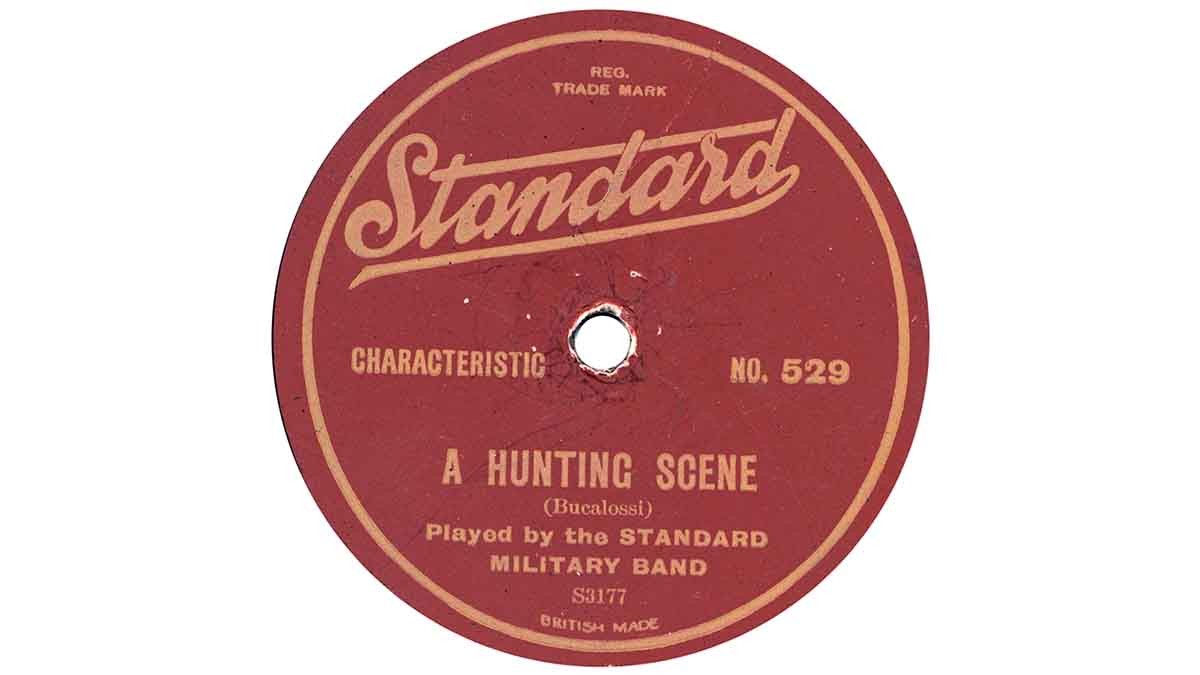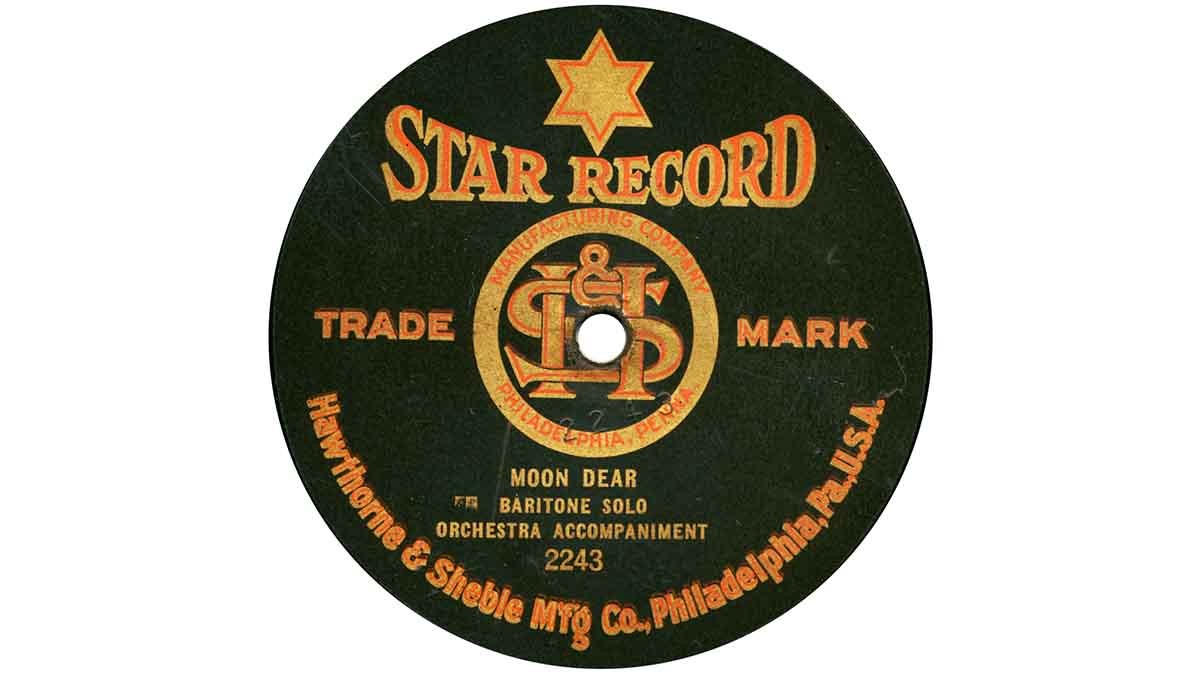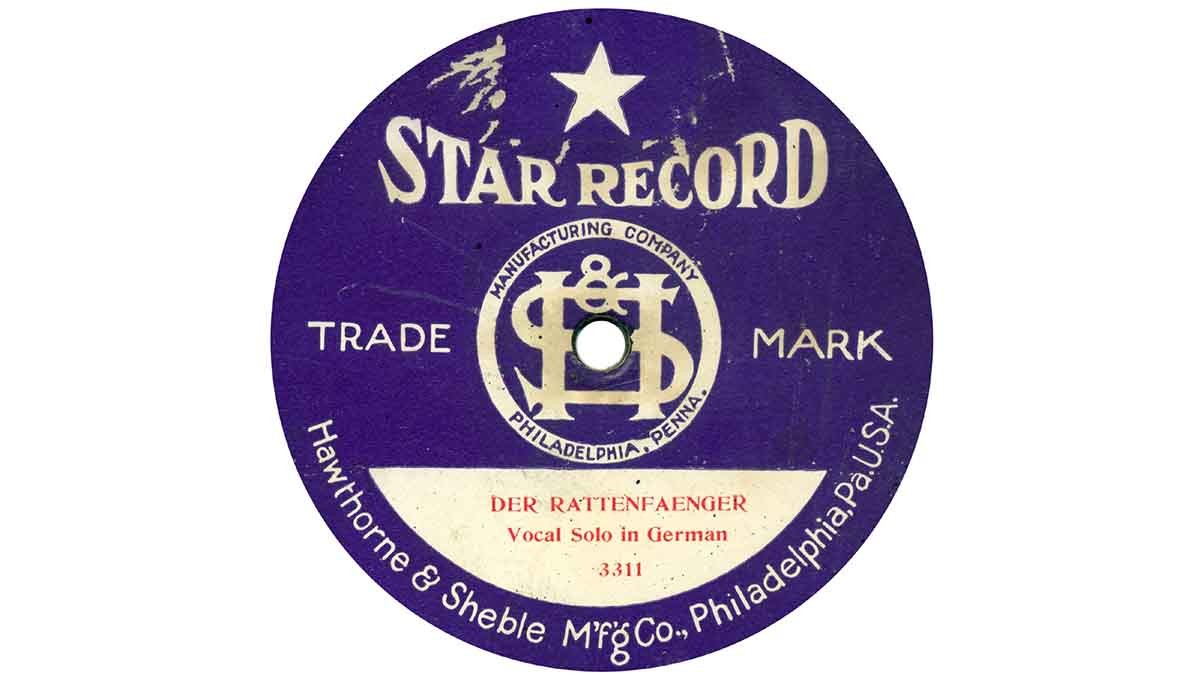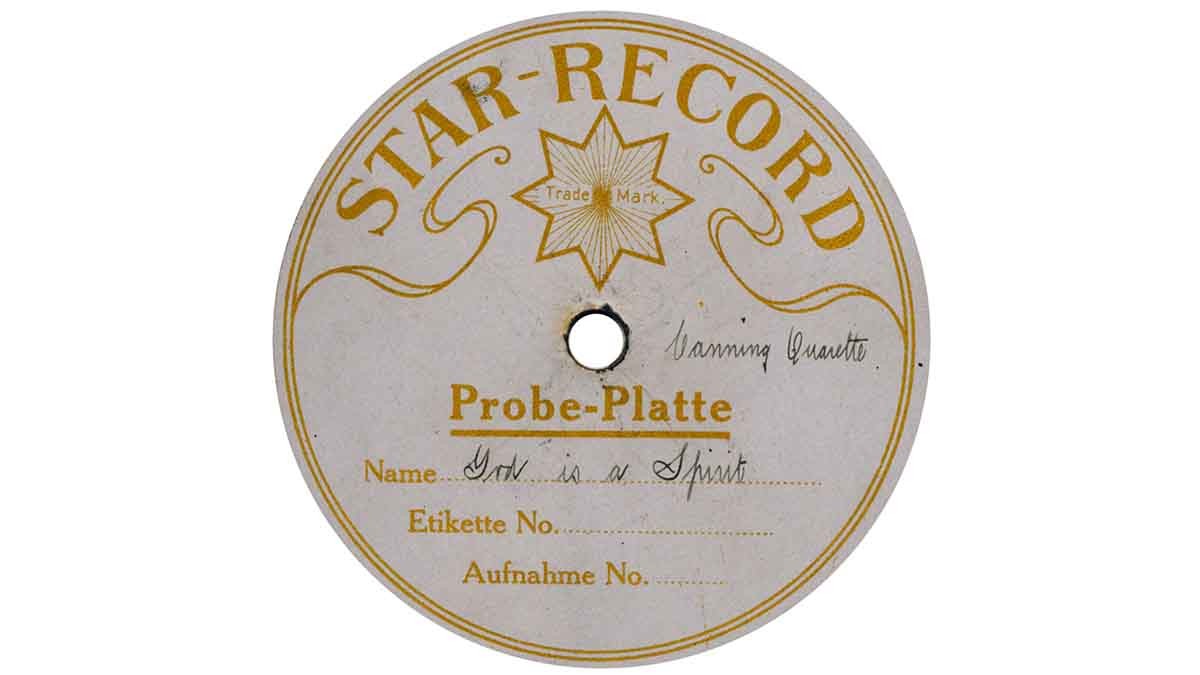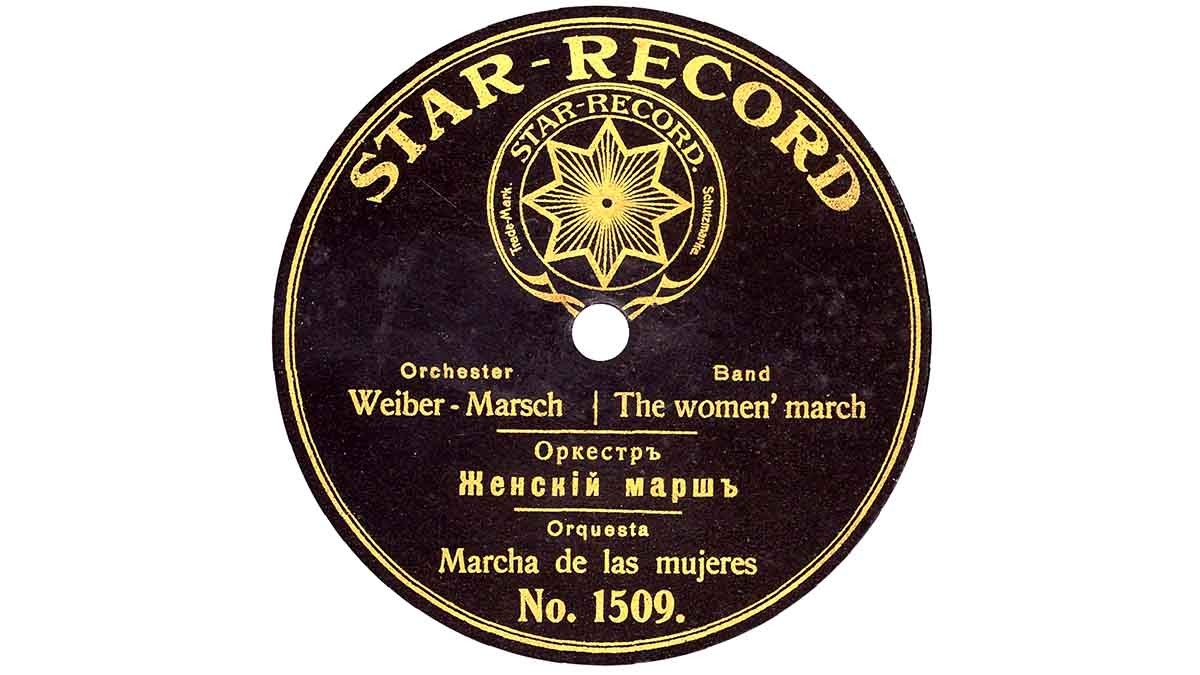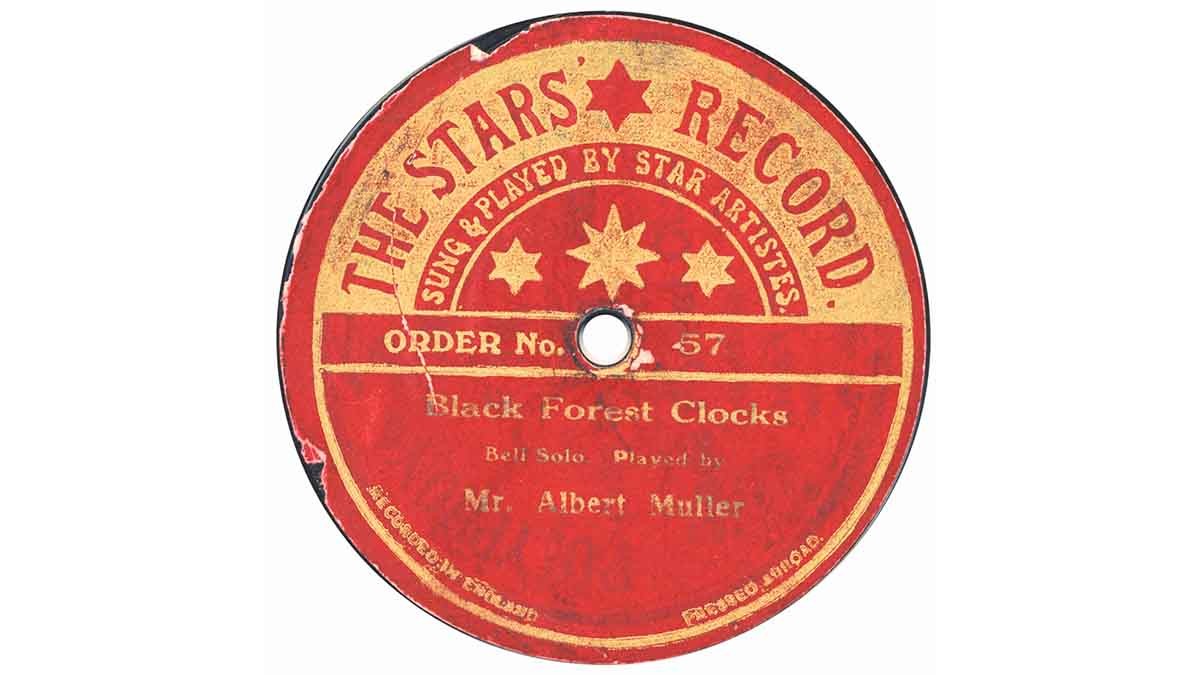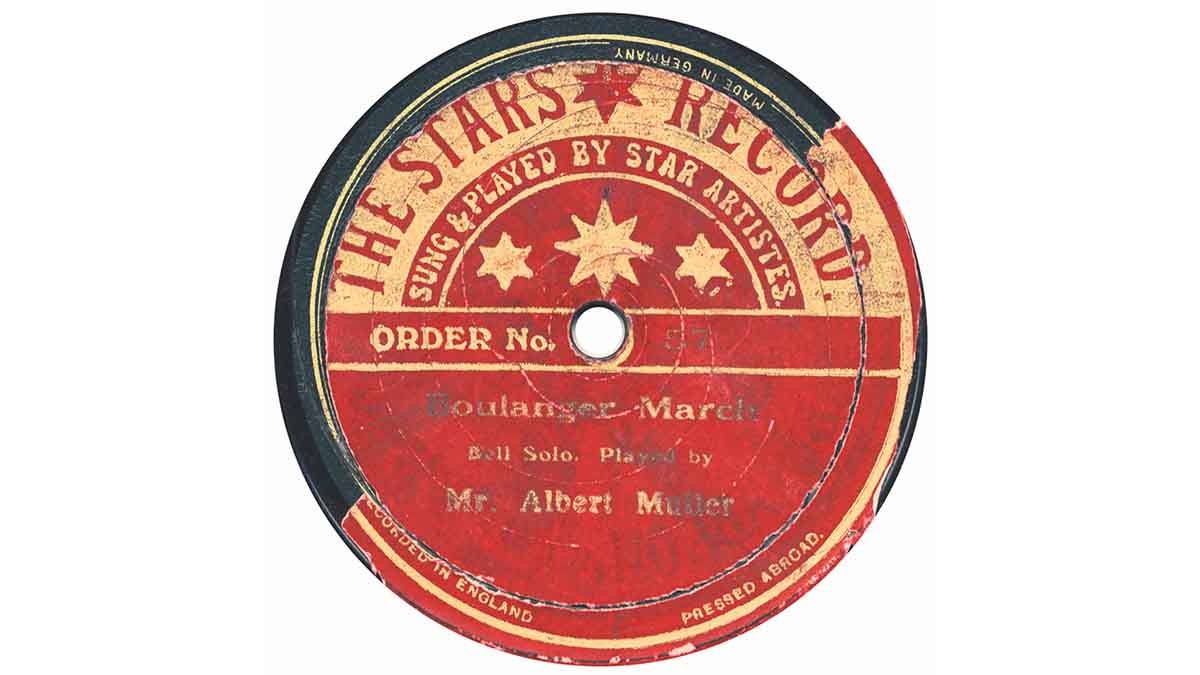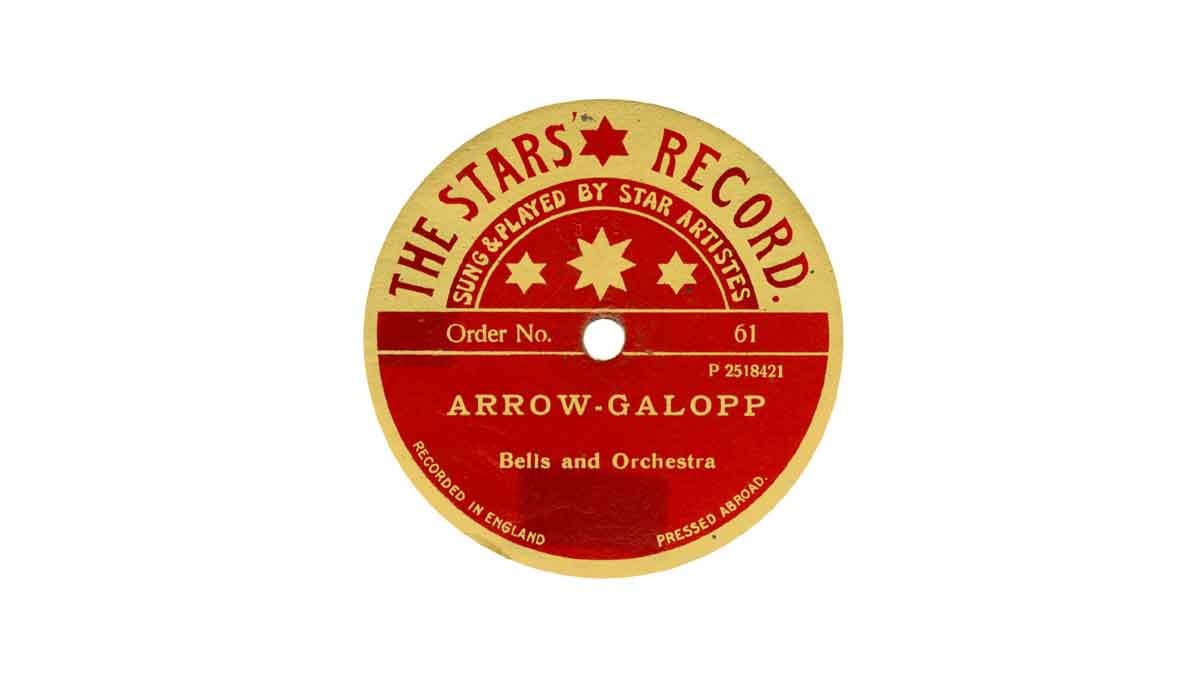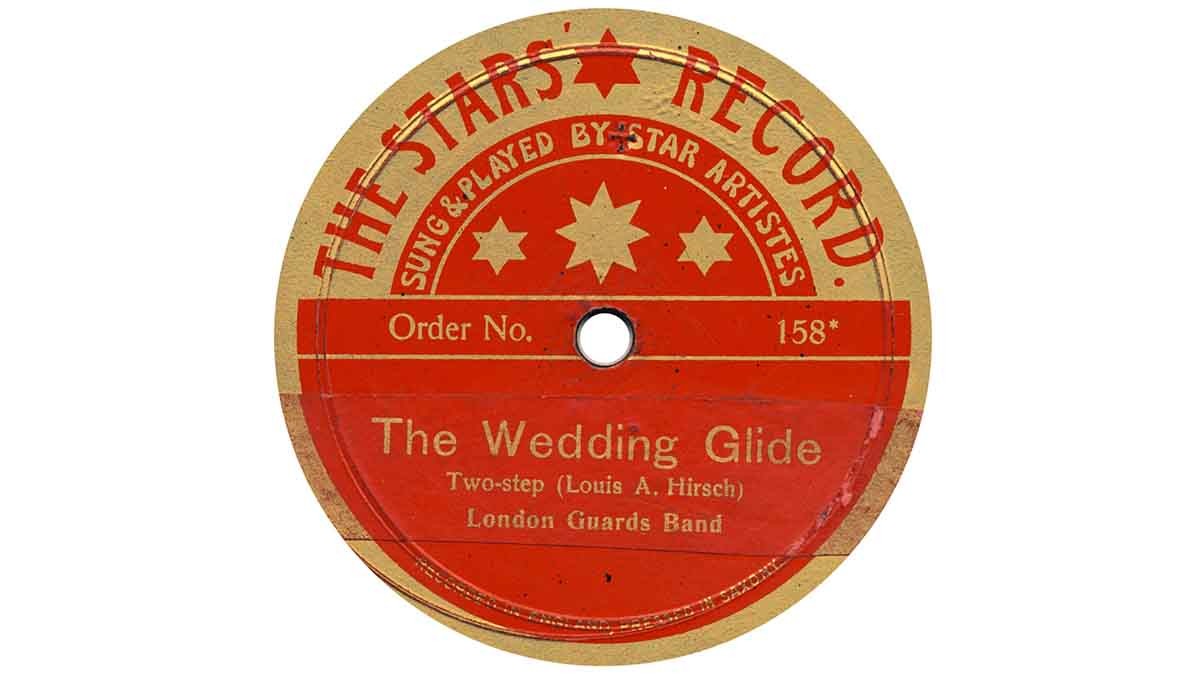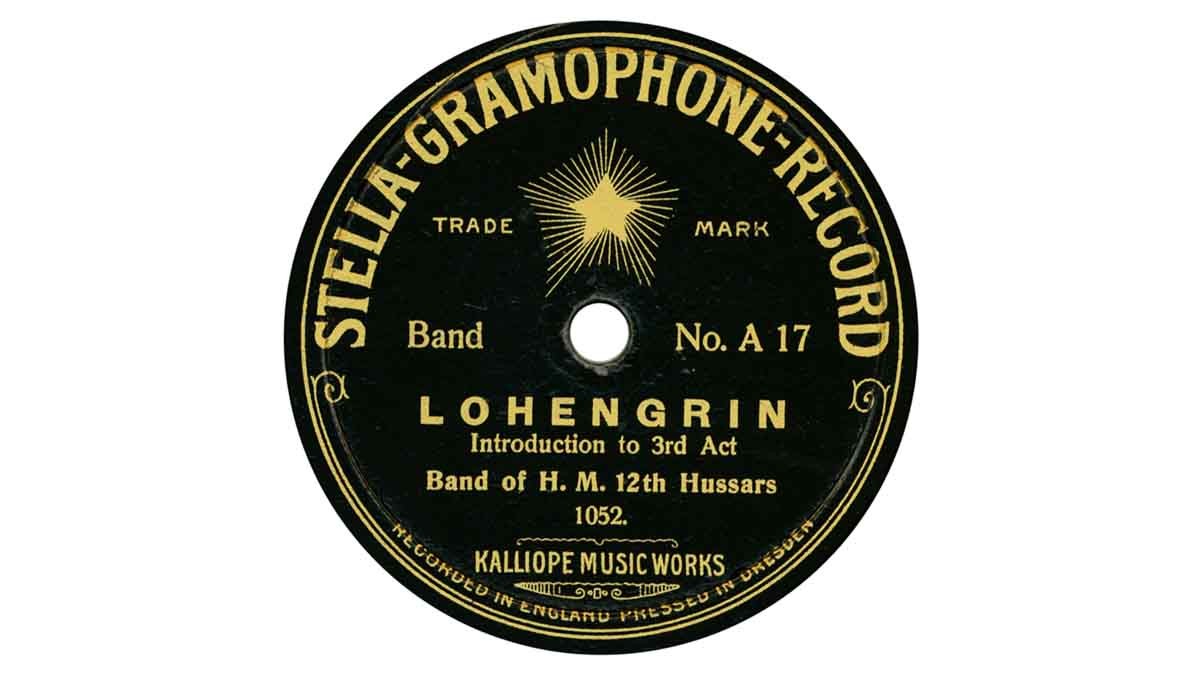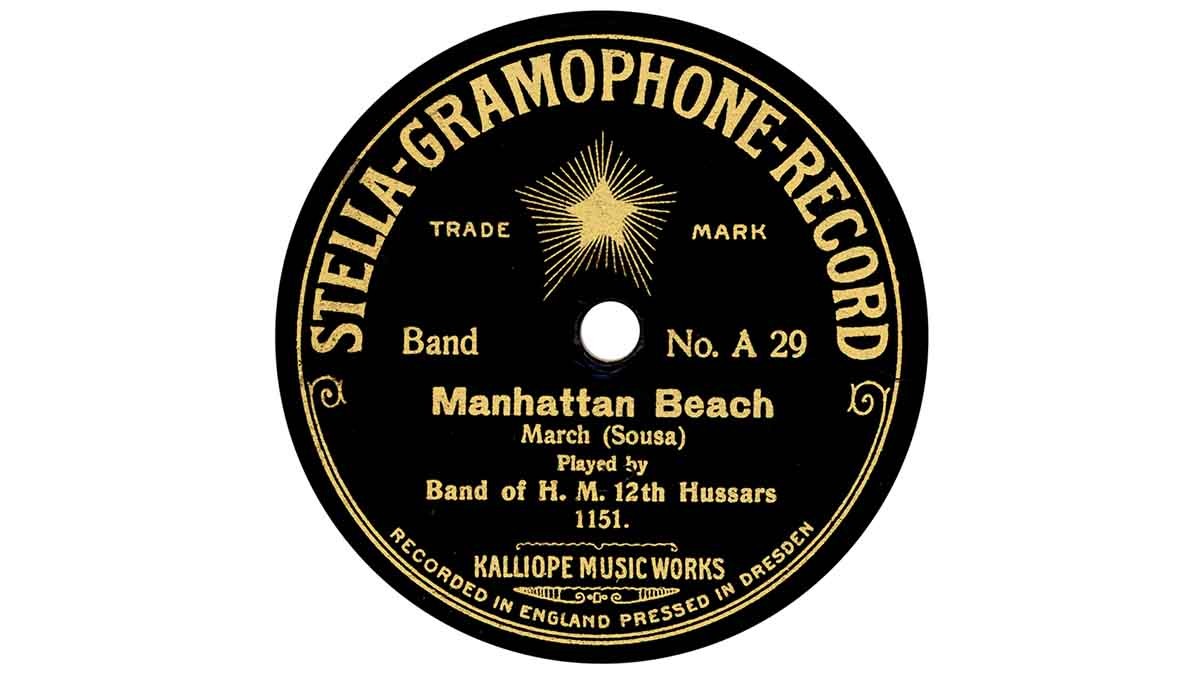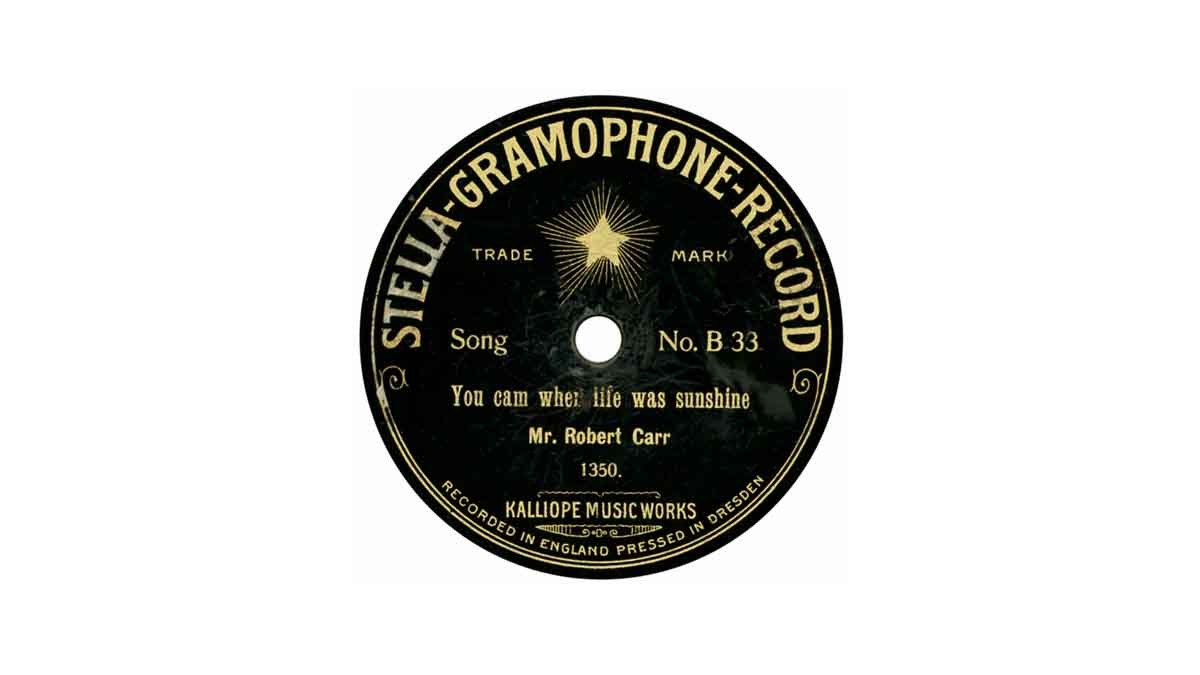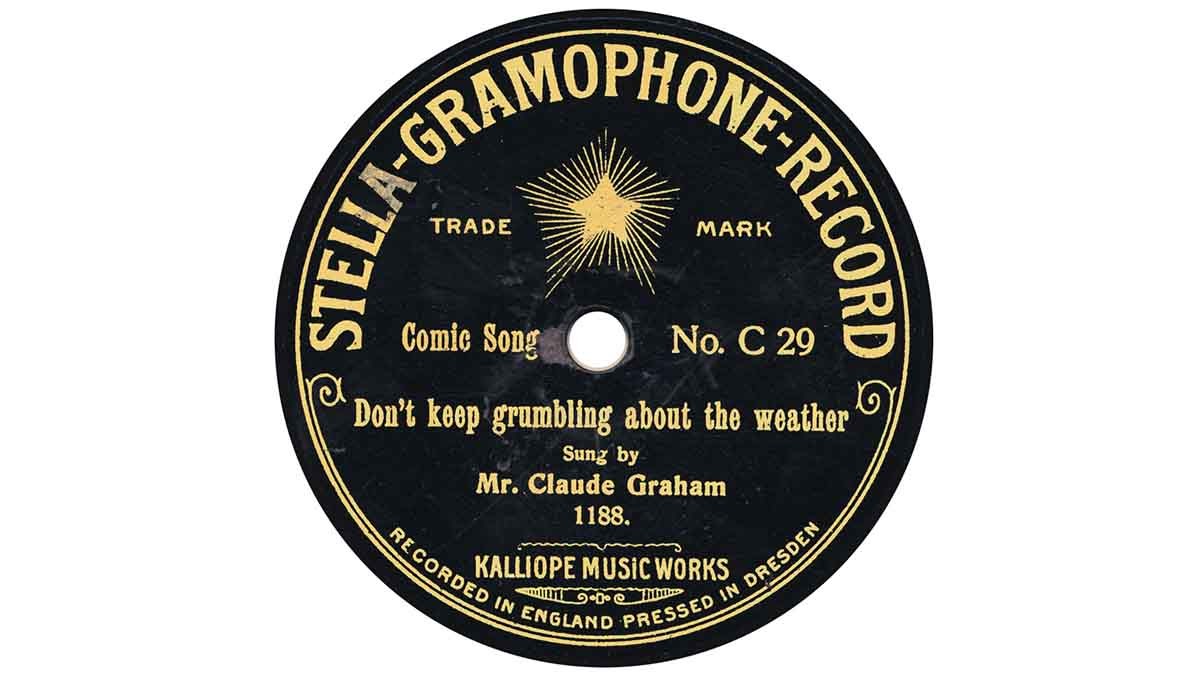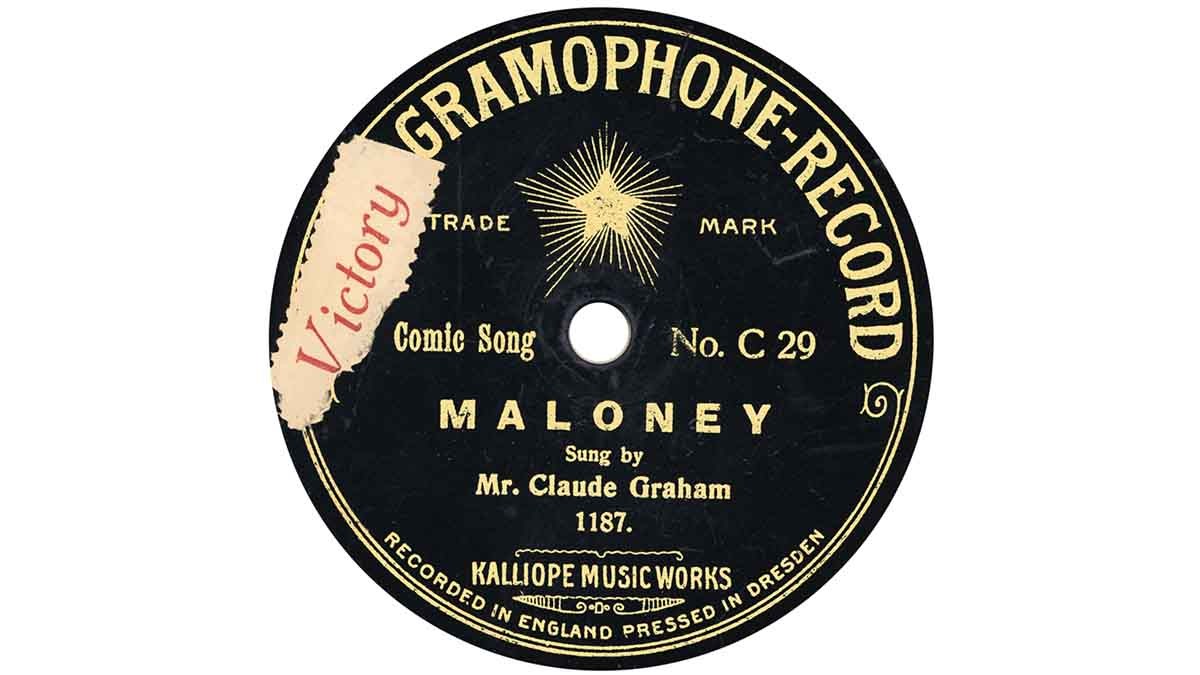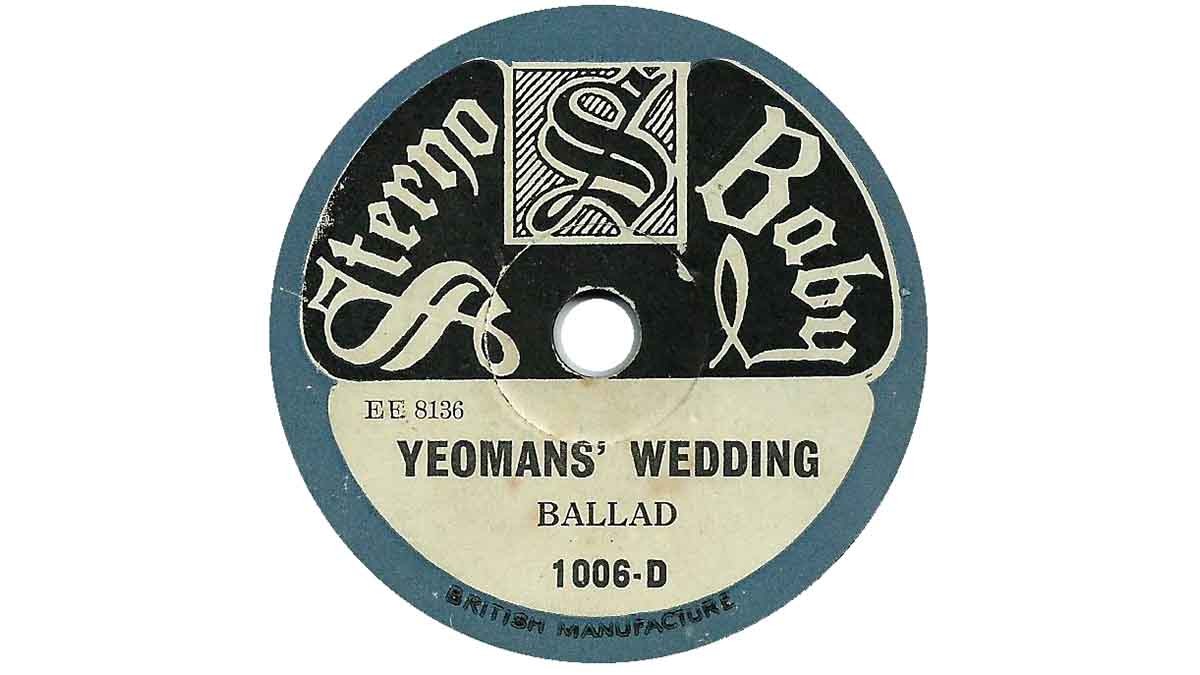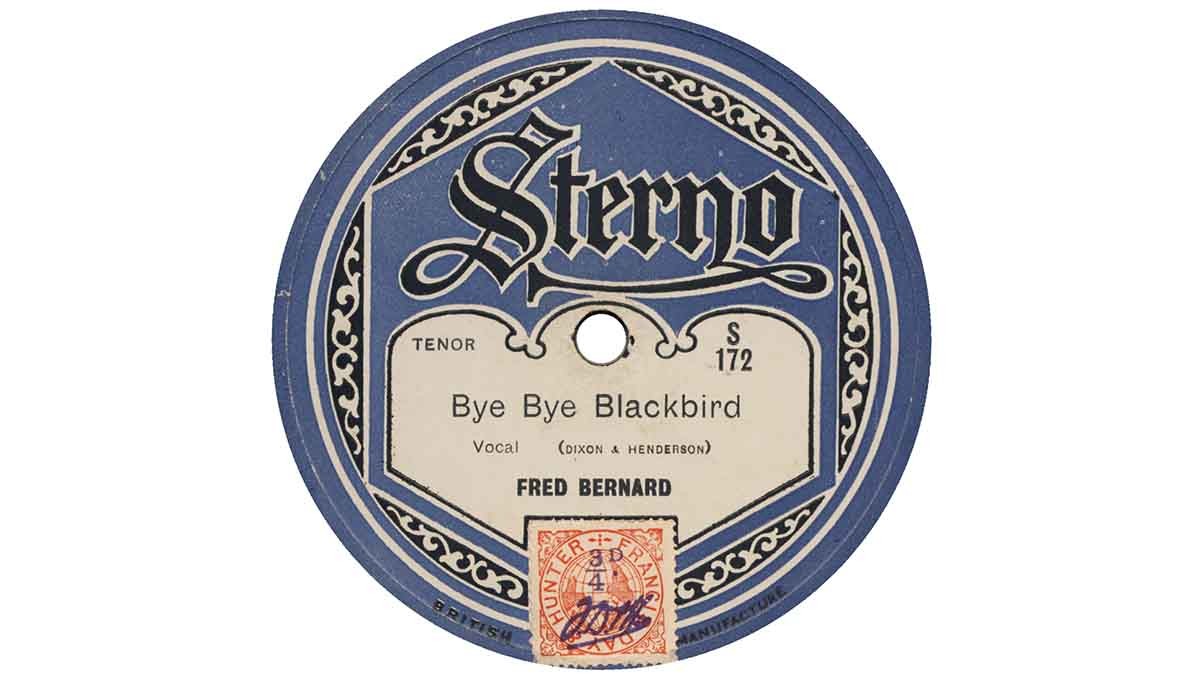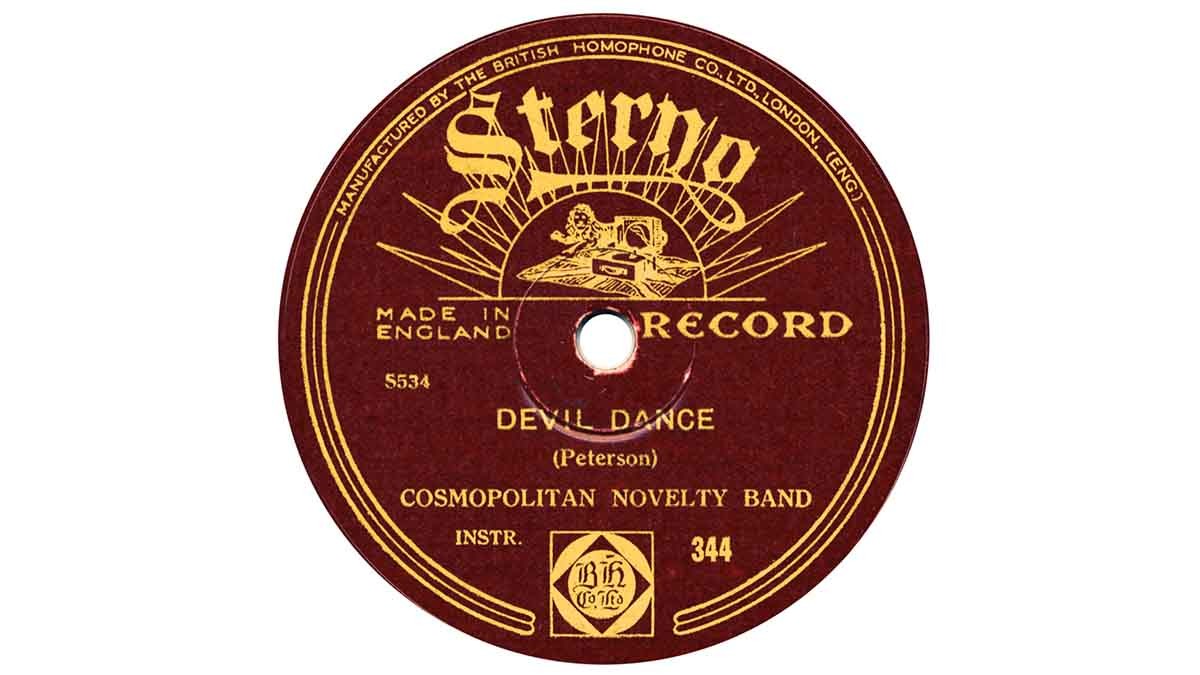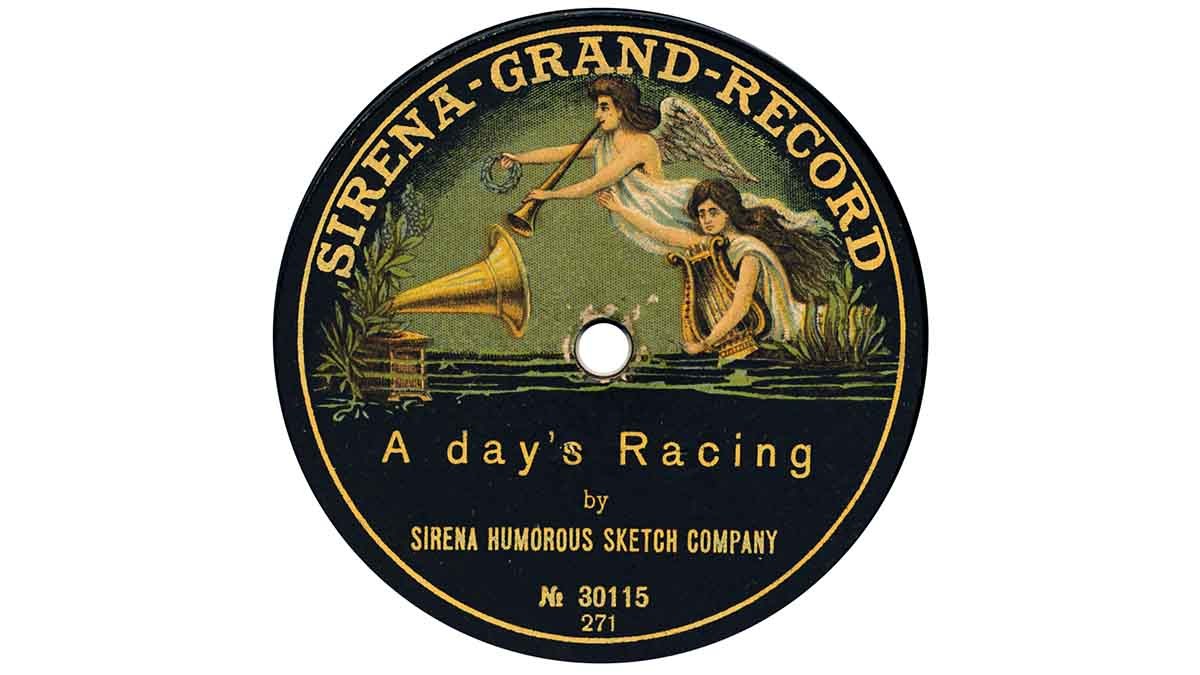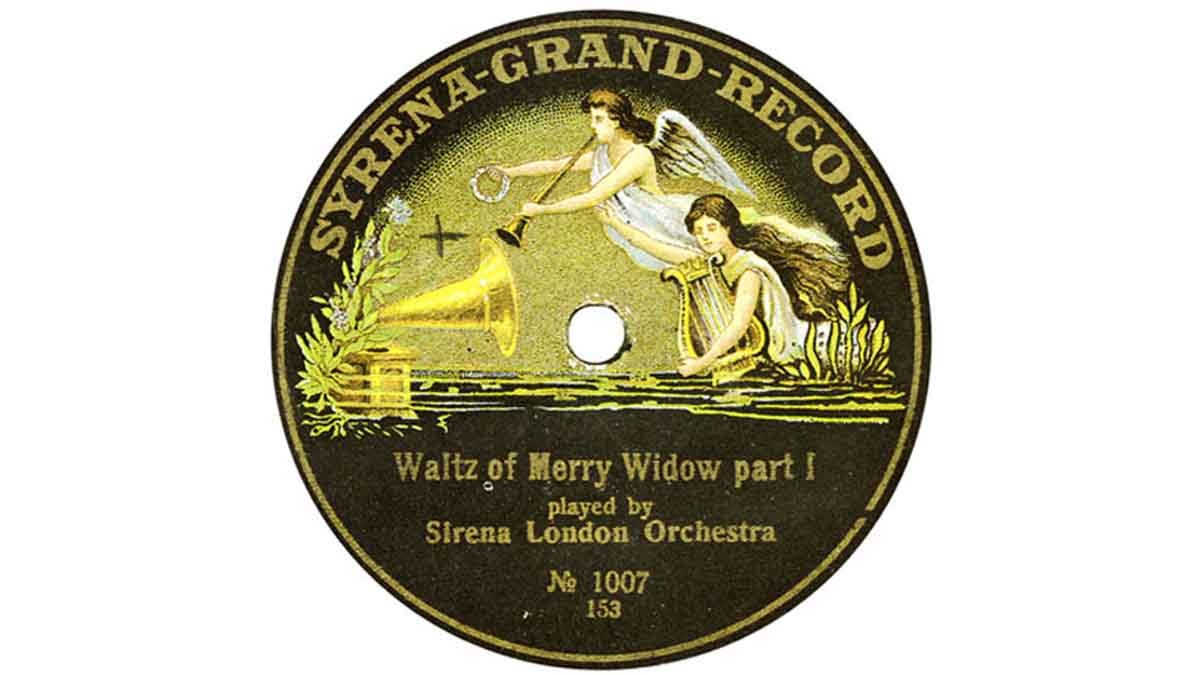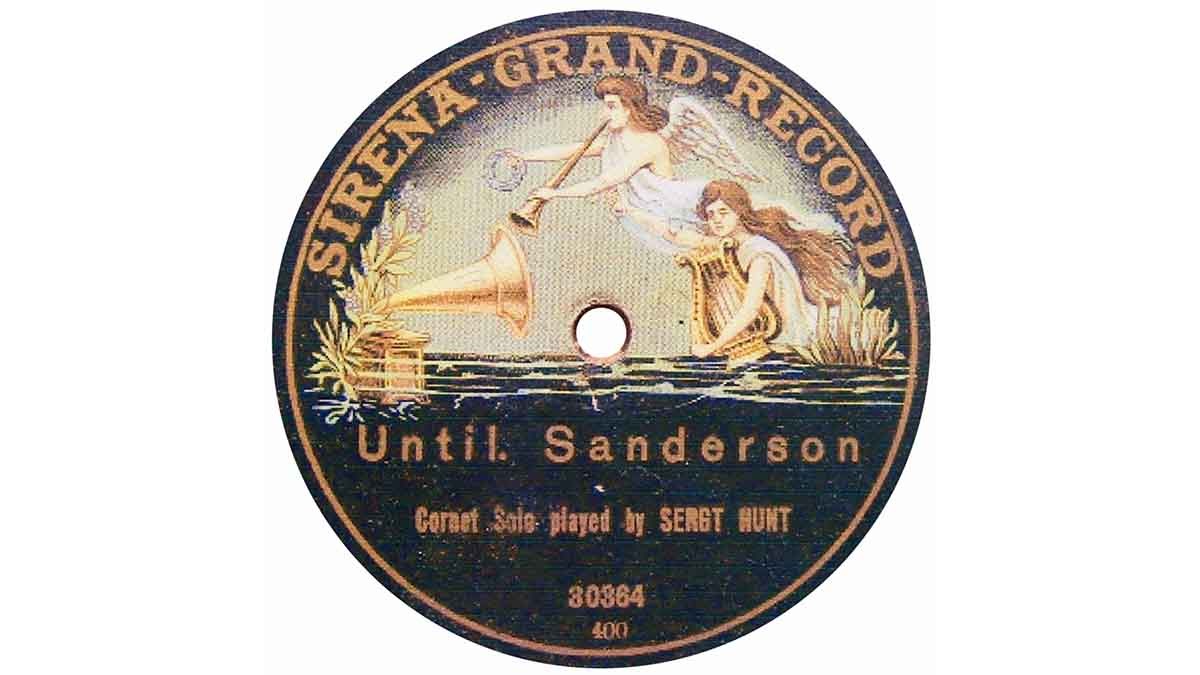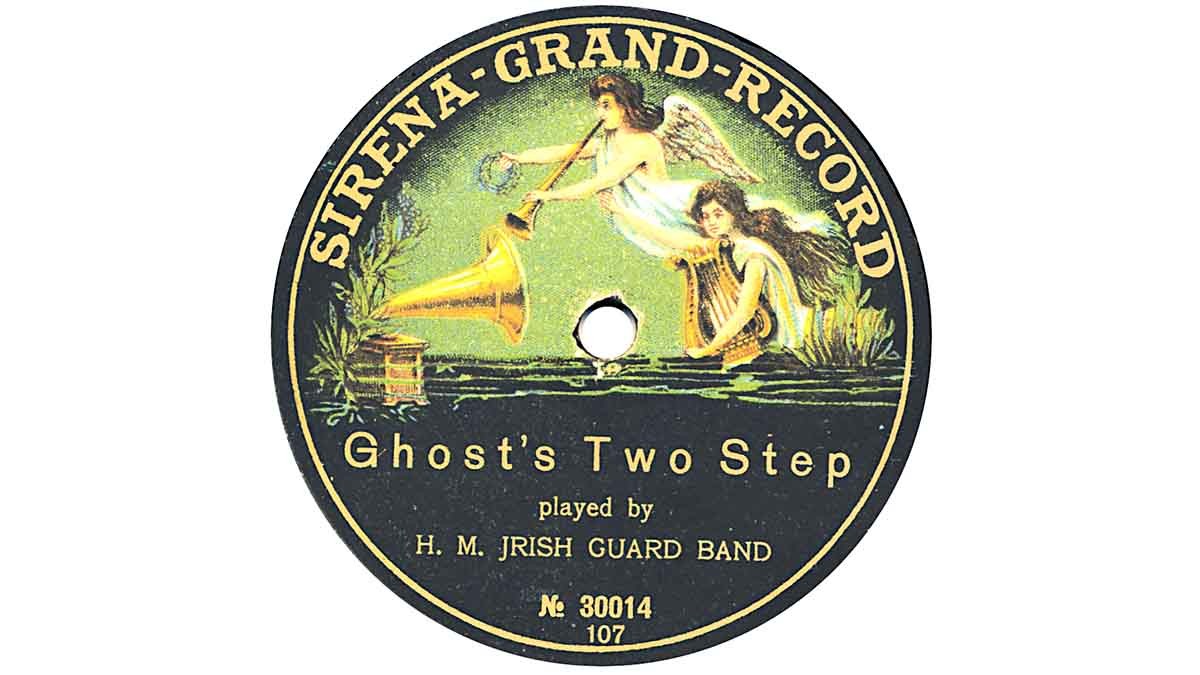
Early British record labels 1898-1926: S
Savana | Scala | Scala Ideal | Selecta | Selfridges | Shamrock | Silvertone | Smith | Sol | Songs and Laughs | Soundwave | Sovreign | Speakeasie | Standard 1 | Standard 2 | Standard 3 | Star 1 | Star 2 | Star 3 | The Stars | Stavophone | Stella | Sterno, Sterno Baby | Stollwerck | Sunshine | Superior | Sylva | Symphony-Concert | Syrena-Grand
Savana
See Frank Andrews & Bill Dean-Myatt, FTR 49, 2014; also Arthur Badrock, TMR 93, 1996. Savana records appeared in 1925. The proprietor was Rose, Morris & Co. Ltd., a wholesaler of musical instruments. The 6″ variety was pressed by ‘Edison Bell’ from their own ‘Bell’ masters. The 10″, in a 1500 series, was pressed by Crystalate, who for the earlier issues, drew on their extensive stock of ‘old’ material inherited from The Sound Recording Co., Bull Dog Record Co. &c. Therefore, on 1510, the march, being ‘standard repertoire’, was culled from a Popular Record with a catalogue number around P-900, which was issued about November 1918, and probably credited to ‘The Guards Silver Band’ – whoever they were. In turn, 1522 is from a Grammavox master issued on that label in October 1912. Though these masters were ‘getting on a bit’ at 7 or 8 years old, it didn’t matter, because they are very good recordings, and in 1925-26 records were still being made acoustically (at least by Crystalate!) Only the advent of electrical recording would finally render this stock-pile semi-obsolete. Savana ran until about 1928.
Scala
See Frank Andrews and Bill Dean-Myatt, FTR 49, 2014. Starting with the Scala Record Co. in 1912, this was a long lived ‘budget’ label which appeared until 1927. The ‘Scala Special Issue’ sticker sits clumsily on the red National Record label. These were recorded for Beka in late 1911 and are all by Billy Williams. Frank Andrews has suggested that National might even have been Billy Williams’s own label. Occasionally they appear with the Scala number printed on the label, as in the second example above – but without the green sticker. Very puzzling. Beka/Lindström supplied both German recordings (283) and locally-recorded material (529). A scarce ‘Scala Grand Opera Record’ series appeared in 1914, with just three issues. The label type for this is unknown. Owing to the Great War of 1914-1918, the British branch of Lindström, being of German origin, was closed down by the Board of Trade in 1916. However, the factory (at Hertford) continued to operate under British management and still produced Scala – and other – records. This continued until March 1920, by which time the catalogue numbers had attained 1122. After a short gap, Scala, now with Coliseum as a sister label, continued from 1200. This signified a new manufacturer – the Orchestrelle Co. (later Aeolian) – see the reference above for full details. The last significant change was a new label, when 1000 was lopped off the catalogue numbers, which therefore carried on with three digits. Although Scala and Coliseum are often thought of as ‘associated labels’, Scala had more autonomy; its own exclusive recordings were made from time to time. These can often be distinguished by the the ‘C.H.’ prefix to the master number – ‘Cooper – Howell’, the proprietors, and date from ~1922-23. The label was, on the whole, extremely successful and Scalas are fairly common to this day. See also Scala Ideal, below.
Scala Ideal
See Frank Andrews and Bill Dean-Myatt, FTR 50, 2014. There were two incarnations of Scala Ideal. The first properly belongs under Scala (above), but appears here for simplicity’s sake. It consisted of thirty-nine 12″ issues made in an I-5000 series, during 1914-1916. The marque then disappeared for six and a half years (!) until it suddenly popped up again with a virtually unchanged label. The 10″ were in a 7000 series, and 12″ discs bore 4000 numbers. It’s clear that Scala Ideal was intended as an up-market label; they were much more expensive than regular Scalas. Jacques Benavente was a quite celebrated violinist. Its AR- master prefix tells us that it was recorded in Holland for Louis Bouwmeester’s label, which was manufactured for him by Scala in the UK. By contrast, the reverse of 7025 (‘The “Unique” Scala Laughing Record’) first appeared on the German Artiphon (q.v.) label. Note the two versions of the label artwork: the earlier one has a pretty sketchy engraving of La Scala, while on the later label it has been re-done much better. The source of this side is unknown, but it probably dates well before 1923. There are also sides from U.S. Emerson on Scala Ideal. The 12″ discs also had high-class repertoire, as on 4035. We have William Garnet James (1892 – 1977), an Australian pianist and composer who studied in London & Brussels and, returning to Australia in 1923, became prominent generally, but especially in the world of radio, being Director of Music for the Australian Broadcasting Commission from 1931 – 1957. You can hear this side on YouTube. The label was eventually pressed by Pathé and continued to around 1927.
Selecta
See Frank Andrews and Bill Dean-Myatt, FTR51. There are only 5 issues on this label. 100 – 102 consist of 6 comedy monologues in Yorkshire dialect by Walter Greenhalgh as “Owd” Shuttleworth. 103 & 104 are of other material; whether also by Greenhalgh is not known. The records were made for Selecta by the Parlophone Co. In fact only G.A.B. 100 was recorded acoustically, thus qualifying for inclusion here. Its master numbers are 731 and 732, indicating a date ca. May 1926. Parlophone was rather a late-comer to electric recording; this began around master 880, ca. October 1926, when an E- prefix was helpfully added. Selecta 101 was recorded around April 1927, while 102 above was made April/May 1928, both under the Western Electric system. Selecta was a trade mark registered to G A Bryan Ltd., of Croydon, hence the G.A.B. prefix. They are better known as a maker of gramophones, and much later as a record distributor, principally for Decca products. This seems to be their sole ‘own label’ venture.
Selfridges - see Crown Perfect & Vocalion
Shamrock
See Frank Andrews & Bill Dean-Myatt, FTR 51. This is a fascinating label which appeared in the Irish Free State in 1927. They carried masters from Edison Bell. Many were electric recordings, but some were trawled from as far back as 1919, thus qualifying the label to appear here. A splendid account of Shamrock records and its colourful proprietor, H P Fay, is available as a free PDF download from the Irish Traditional Music Archive Additionally, Fay marketed the ‘Fayotone’ disc home recording devices in the early 1930s. For info. on these, click the tab ‘Articles about 78s’, then ‘Disc home recording devices’.
Silvertone
See Frank Andrews & Bill Dean-Myatt, FTR 51. This very elusive label dates from late 1916. They were made, under the aegis of the Scala Record Co. from masters belonging to the British wing of Carl Lindström A.G. Because it was a German-based company, it had been closed down by the government under the ‘Trading With The Enemy’ act in 1916. No. 207 is from Odeon (or more likely Jumbo) masters; while 511 is completely anonymous on one side, but the other is from Beka. A label carrying both Jumbo and Beka masters is evidence that it was derived from the stock-in-trade of the Lindström works at Hertford. There was only one issue of Silvertones. To add to the general festivities, above the centre-hole appears a list of patent numbers from various countries; it is identical to those appearing on British Odeon records – another Lindström label. These are the numbers of the 1903 Petit-Prescott patent for double-sided records. That patent had been overthrown as far as Europe was concerned, ten years before Silvertone appeared. I suppose the proprietors of Silvertone records were simply gilding their inexpensive lily by adding a lot of impressive-looking patent numbers? Thanks to Mike Thomas for spotting the connection. See more on the Petit-Prescott patent.
Smith - the Phono King
See Frank Andrews & Bill Dean-Myatt, FTR 52. Few examples of this rare marque are known, rendering it one of the scarcest early British labels. Smith had a business in Sheffield, and these discs were manufactured for him by The Sound Recording Company, whose principal label was Grammavox. One example bears a catalogue number – 135 – while another carries 2087 and 2093, these being Grammavox face numbers of 1911. The label was red with gold printing.
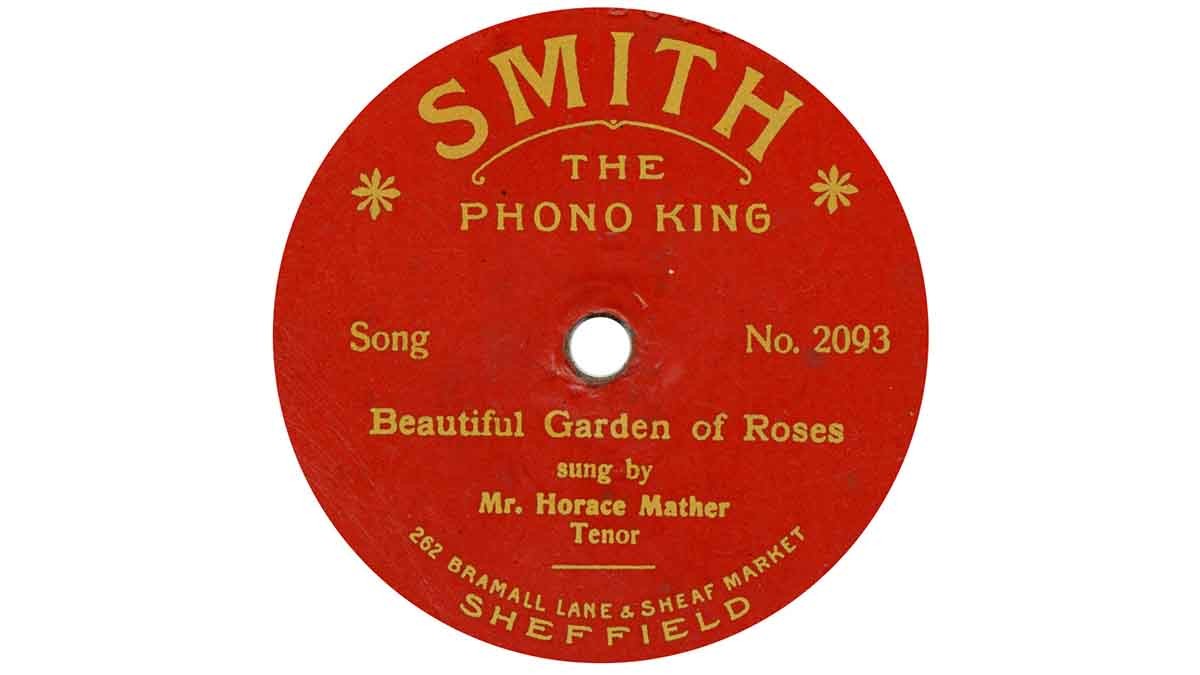
Sol
See Frank Andrews, FTR 37, 38, 39. A record made by Bull Dog in the UK for Vike & Co. in Norway. It is a clone of Bull Dog 665, by the violinist Ferdinand Hill. It dates most likely from very early 1920. Although the label says: ‘Enefabrikanter: Vike & Co, Kristiania’, Frank Andrews believes that there was no record pressing factory in Norway at the time, and so it would have been pressed in the U.K. by Crystalate. There was a two-way traffic between Bull Dog and Norway, in that recordings taken in Kristiania (as Oslo was known prior to 1925) appeared on Bull Dog – and later on Imperial. You should read Frank’s major 3-part article on William Ditcham, the proprietor of Bull Dog Records, for the fascinating story of Bull Dog and its ‘Norway connection’.
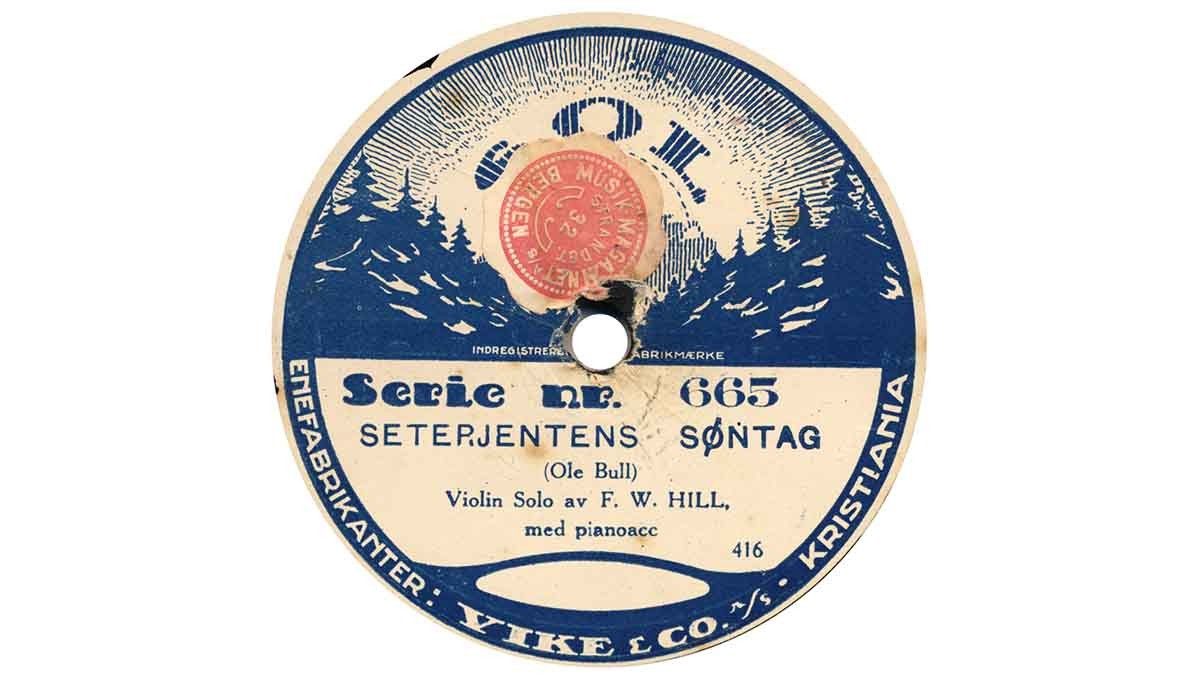
Songs and Laughs
See Frank Andrews & Bill Dean-Myatt, FTR 52. “Hellish Rare” label – a phrase used decades ago by classical record collector and dealer Michael Wyler. Pressed (and probably recorded) by William Ditcham’s Bulldog Record Co. This is the only known example, but there must be at least 2 or 3 other issues? Our examples are from a photocopy, but the label illustrated in FTR 52 (which is of the same disc) appears to be pale pink with black printing. ‘The Passing Show’ was a big London hit from 20th April 1914, and ran for 351 performances at the Palace Theatre. Frank and Bill attribute a probable date of ca. 1914 – 1915.
Soundwave
See Frank Andrews & Bill Dean-Myatt, FTR 52. Another scarce label. The first incarnation have black labels and are ‘Reproduced in Prussia’. The rather vague pseudonym ‘Mr. Terry’ is found on anonymous records which Dr Rainer Lotz informed us derive from Turmaphon – so perhaps C-53 above does also? Who had them made is unknown, but the initials ‘T.B.’ doubtless mask – for the time being – the identity of the proprietor. The second type, with the plum label, are British Made and therefore presumably date from after the outbreak of war in August 1914. No.141 was certainly pressed by the Disc Record Company, as it has their characteristic ‘MADE IN ENGLAND’ in the wax. Altogether a mysterious label, which may only roughly be dated 1910 – 1915 for the time being. If these plums are post August 1914, it is ironic that the band laconically given as “12th Hussars” is almost certainly The German 12th Hussars – ‘The Thuringian’. Our 12th regiment of horse were lancers! (Thanks to Nick Ward for pointing this out.)
Sovreign
See Michael Kinnear, NR; Frank Andrews, BRI; also Frank Andrews & Bill Dean-Myatt, FTR 53. For a change, this is a rare label about which a good deal is known! June 1907 saw the advent of this marque, which belonged to the British Sonogram Co. Ltd. Frank tells us that 108 discs were issued altogether, before they went out of business before the end of that same year. The labels bear that date, on the reverse of the golden sovereign coin appearing on the label. They were pressed by the Disc Record Company in Stockport, Cheshire, from the masters of the recently-defunct Nicole Record Co., which they had bought, along with presses & other equipment. Unlike the brown Nicoles, these discs were black, though the celluloid(?) surface was still laminated to a wood-like cardboard core. Some Sovereigns are very thick indeed. However, towards the end of Sovereign’s short life, some newly-made discs appeared, numbered 109 to 126. These were advertised as ‘Sonogram Records’ rather than Sovereign. None of these have ever been seen. They may never have appeared, so we will never know if it had a different label and was actually called Sonogram. Still, the labels of Sovereign itself are resplendent, compared with other early and drab productions of the Disc Record Co. such as Conqueror, Whytsdale, Empire &c., yet even this evidently did not serve to promote their sales. They remain very elusive. NR has a very good listing of them.
Speakeasie
See Frank Andrews & Bill Dean-Myatt, FTR 53. A home recording attachment for the gramophone which appeared in 1932. However, it operated under the mechanical (acoustic) system and so appears here. This paragraph is still being written. November 2015.
Standard 1
See Frank Andrews & Bill Dean-Myatt, FTR 54. These discs were made, for an unknown client, by the ‘Edison Bell’ concern around 1910. They used that company’s Bell Disc masters, and so are rather larger than usual: 10.25″ (26cm). They are scarce, so only a few examples are known. Catalogue numbers 1085, 1089 and 1091 have been noted, so the series probably began at 1000. The label above suggests that around 200 were issued. This seemingly large number in no way implies a long existence for this – or any other similar – marque. At this time period, if a dealer or wholesaler wanted their own record label, their supplier would make up a whole varied catalogue for them, which appeared in one fell swoop. On the other hand, considering how scarce this label is, we may reasonably infer that Edison Bell were perfectly prepared to create a catalogue of 200 items, and didn’t mind if the client only wanted a very few of each! For if EB were, say, pressing 100 copies of a Bell Disc for their own stock, it would be little trouble to them to ‘run on’ for another 10 copies, giving those the labels of the client – in this case Standard. However, it is obvious, that the clones would always be the same coupling as the Bell Disc. Unfortunately, we have not seen enough of these Standards to test whether that is the case here – it certainly seems to be the case with National -2 and Star -3, other scarce and early EB products.
Standard 2
See Frank Andrews & Bill Dean-Myatt, FTR 54. The Sound Recording Company registered a trade mark for Standard Record in May 1911. Trade enquiries were invited in May 1912 for this label by a ‘Wholesale Standard Record Co.’ of Marylebone Passage, Wells Street, (London) W. No example of this disc is known. The trade mark was a musical staff with a treble clef and three notes. Possibly insufficient interest was shown by the Trade to initiate the production of the discs? Was this the company who had run Standard -1 above? We shall probably never know. But see Stavophone and Standard – 3 below.
Standard 3
Even if The Sound Recording Company never got its 1912 ‘Standard’ disc off the ground, it retained the name for future use, renewing the trade mark in 1924. Around this time, Crystalate, who had always pressed SRC discs (besides many other makes) seems to have absorbed SRC, and had already begun its very successful Imperial line. Discs under the name ‘Standard’, and using exactly similar repertoire, soon also appeared, but never flourished like Imperial. Probably Crystalate were very good at promoting their own Imperials, but the unknown client for whom they made the Standard, weren’t? The reverse of 521 is ‘The Robbers’ March’ from Chu-Chin-Chow, and bears master number 2625. This appeared on Popular 900 in late 1918 as ‘The Guards Silver Band’. ‘Stars And Stripes’ has master 2628, doubtless from the same session – though its Popular issue is not yet known. Again, ‘A Hunting Scene’ bears the master number 177, and the other side, ‘The Smithy In The Wood’, is 176. These two masters were issued in October 1912, coupled on Grammavox A-104. Therefore we have another instance of the late re-use of Crystalate’s stock of ‘old masters’ from Grammavox, Popular, Bull Dog &c. Standard 529 is 10.125″ in diameter, so the old Grammavox master stretches nearly to the edge of the disc – for Grammavoxes used to be 10.25″ in size.
Star 1
See Frank Andrews, HD 203. In September 1907, the General Phonograph Co. Ltd. 1 Worship St., London, imported the U.S. label ‘Star’, in both 10″ and 12″ sizes. They were made by Hawthorn & Sheble Mfg. Co., Philadelphia, U.S.A., and most if not all were pressed from later American Record Co. masters, or U.S. Columbia masters – the latter in both sizes. Those deriving from Columbia would have presumably been pressed at that company’s factory in Bridgeport, Connecticut. There were two types of label: a blue, red & white with a five-pointed star, and a red, gold & black with a six-pointed one. I had never seen a five-point Star until William Dean-Myatt kindly sent along the image in February 2015.
Star 2
Dr. Rainer Lotz kindly informed us that this Star label disc, with an eight-pointed trade mark, was produced by Ernest Hesse, a company based in Berlin. They produced their own label, and also anonymous issues, multi-lingual issues, and in addition furnished masters to, or had pressed, no less that thirty-six other labels. Most of these were German, but one was British Melograph. They also supplied material to the Stella and Kalliope concerns. It may be that some sides on British Stella and Kalliope originated with Star. It is not claimed that the quadri-linguial Star discs actually appeared in the U.K., but there is clearly an intent that some enterprising wholesaler might have imported them, as well as into Spain, or Russia…
Star 3
See Frank Andrews & Bill Dean-Myatt, FTR56, p457. Eventually, one can almost tell who produced a record as soon as you see the label. This one, distinguished by a seventeen-pointed star, immediately proclaims itself to be an ‘Edison Bell’ product: the large label, the type face of the number, the phrase ‘Genuine British’, even the cartouche containing the phrase. These are all tell-tales. This is the only image of this make we have seen, and are grateful to Paul Baker for allowing us to use it (as well as several other scarce labels). We have not seen an actual disc – but if we ever do, it will be 10.5″ in diameter – a further proof, were one needed, that these are Edison Bell ‘Bell Disc’ masters. This particular one is from Bell Disc 143, credited to Frank Lindon. It was released in February 1910. Who had these Star records made is totally unknown. Obviously this disc cannot precede 1910; but might have been made anywhere between 1910 to ~1915, when Edison Bell ceased to supply contract pressings. They are exceptionally scarce. In FTR56, the other side of this disc is illustrated. It bears the same coupling as Bell Disc 143, and we are currently (December 2015) speculating that with these very scarce Edison Bell clones – and there are several of them – that Edison Bell would ‘run on’ at the end of a pressing run for themselves, and produce a further quantity, possibly a very small one, bearing the labels of their client. Thus, it may be that there were only ever a very few examples of each Star record. Perhaps only 10 or 20. This would certainly account for their scarcity. See also National – 2 and Whytsdale as examples of this.
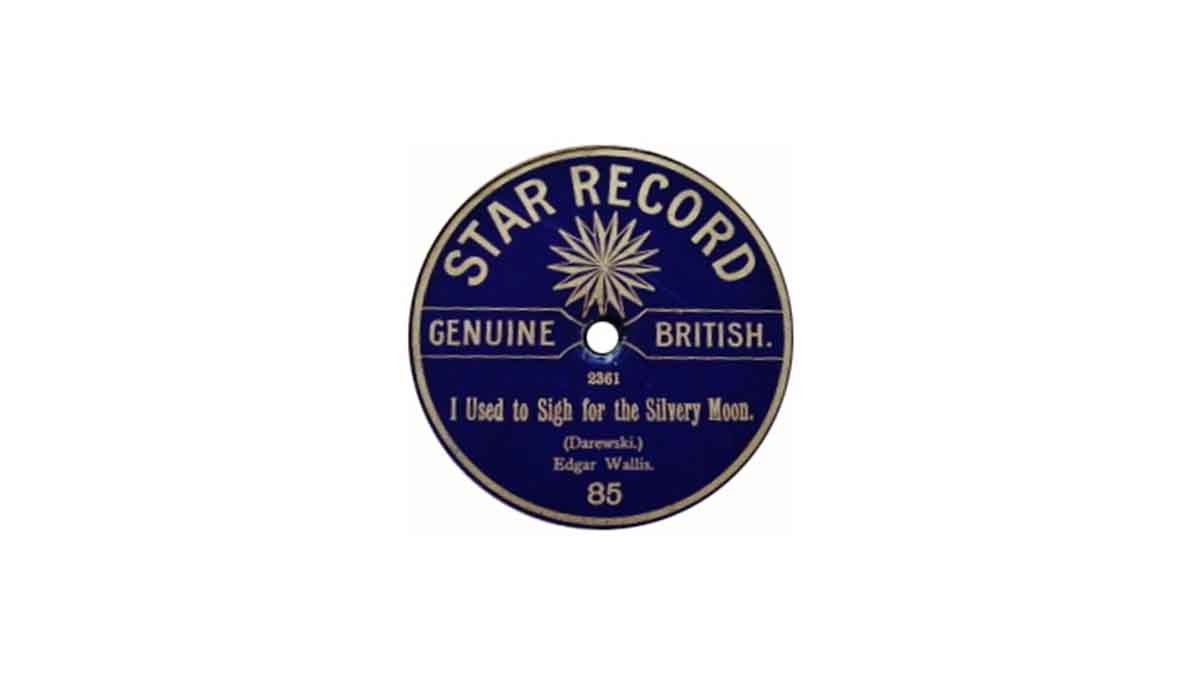
The Stars
Who imported and distributed these discs in the U.K. is not known. However, they were pressed in Leipzig, Saxony, by Polyphon, drawing from their own masters. They carried both British and German recordings, the latter – as usual – consisting of standard instrumental repertoire; there was no point in recording a widely popular march (e.g. ‘Old Comrades’) in London when a perfectly good version had already been made in Germany. Some of ‘The Stars’ discs are simply Polyphon pressings with over-stuck ‘Stars’ labels, such as 57 above. At first, the labels said ‘Pressed Abroad’; later ‘Pressed in Saxony’. There is clearly a connection with the very scarce ‘Sylva Record’ (see below) as the label design is the same; but Sylva records were pressed in Berlin by the Turmalin Fabrik, and naturally used other masters. No explanation of this is currently known. Finally, one ‘Stars’ disc was found to have its labels over-stuck on an Operaphone record bearing the ‘cherub’ design. These had been banned from sale because of legal action by The Gramophone Company, the ‘cherub’ having infringed its ‘angel’ trade mark. Conjecturally, a job lot of these otherwise unsaleable Operaphones was bought in and over-stuck by ‘The Stars’ concern.
Stavophone
See Frank Andrews & Bill Dean-Myatt, FTR 55. This black & white image comes from an advert by The Sound Recording Company, in the trade paper ‘Talking Machine News’. It dates from late 1913, and the SRC are offering three labels: Popular, Stavophone and Imperial. There’s no problem with Popular – they are abundant. But Stavophone and Imperial (the latter an intermediate version between the 1907 and 1923 types ) have, as far as we know, never been seen. We don’t even know what colour their labels were. But thanks to Joe Moore, who kindly furnished a photocopy of the advert., we at least know what the Stavophone label looked like. There was a company involved in Apollo records called Craes & Stavridi; it is pure conjecture, but perhaps Stavridi might have had Stavophone records made for him? As with any other label as rare as this, if you have seen one, do please let us know. You will of course be given credit here. Bill Dean-Myatt recently pointed out that the advert states: “For wholesale buyers only – ‘Territory Reserved’” This might imply an overseas ‘territory’, so the discs – if they were made at all – might have gone for export?
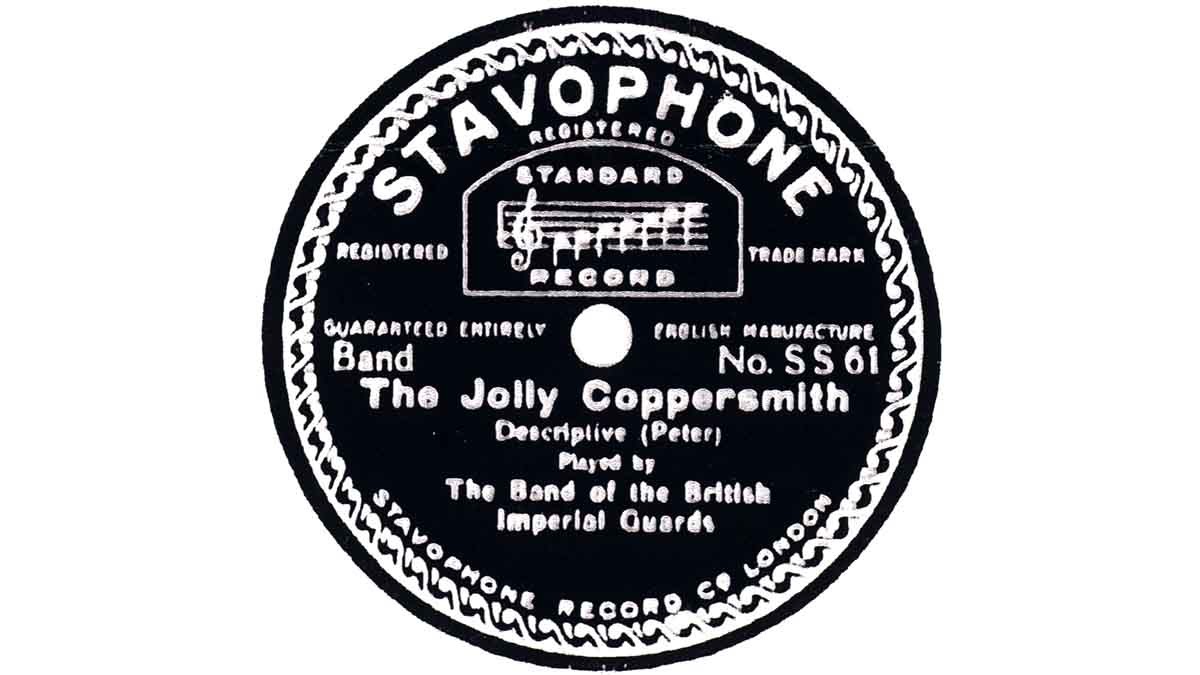
Stella
See Frank Andrews & Bill Dean-Myatt, FTR 55; also Frank Andrews, HD 229 re. Diploma; and specially TMR 75, 1988, for Frank’s highly detailed account of J.L. Blum and his labels.
This was one of a group of three labels, all made (or eventually made) by the Kalliope Musikwerke, Dresden, Saxony. Victory and Diploma were the others. The client was J Blum & Co., of Old Street, London EC. Blum was evidently extremely active in the gramophone trade, as he had other labels too, such as Bellerophone, Cleopatra, Diamond (or one of them) and Famous, over quite a long period. The letter prefixes denote the repertoire: A for bands; B for vocal ballads &c., C for comic songs; D (seemingly) for vocal duets; E for sacred songs and hymns; F for instrumental solos. Originally, Diploma and Victory were made by other companies, such as Edison Bell – those began in August 1911. But eventually Kalliope made all three. Blum was a wholesaler (or factor) who sold these labels to dealers. They were quite prolific: the A- series attained at least A-159; the B- series is known as high as B-103; the C- series ran to C-153. The D-, E- & F- series were much shorter though. An interesting situation arose when it finally dawned on the Pathé company, that it was they who had ‘Stella’ registered to them as a trade mark. Accordingly, Blum was made to stop using it. In order to use up his residual stock of Stellas, he overstuck them with small Victory perforated labels, as you see with C-29. The reason we say that Pathé didn’t notice Blum using Stella at first (or if they did, took no action) is because Stellas without stickers are far more common than those with. Issues seem to have been made until October 1914, presumably from new stock to hand. But after August 1914, of course, no more imports from Germany were possible. So we’re looking at 1911 – 1914 for the above labels. Incidentally, ‘H.M. 12th Hussars’ is a German band name: in Britain, the 12th Regiment of horse were Lancers. The ‘H.M.’ is not His Majesty King George V, but His Imperial Majesty Kaiser Wilhelm II! (Thanks to Nick Ward for this info.)
Sterno, Sterno Baby
See Frank Andrews & Arthur Badrock, TMR 68, 1984; also Frank Andrews & Bill Dean-Myatt, FTR 55, 2015. The name Sterno is derived from William Sternberg, the head of the British Homophone Co. It was originally a trade mark for gramophones in the early 1920s. Later, there were also Sterno records. These existed in three incarnations. The first, made by HMV in 1926, was brief, and those discs are very scarce. Indeed, this version is not relevant here, for they were electrically recorded, and so beyond the scope of this site; yet we cannot resist including an image, as they are so seldom seen! The second, Sterno-Baby was also commissioned in 1926 from HMV as a series of masters for use on a number of what we call micro-discs – those less than 7″ (17.75cm) in diameter. These masters were 6″ (15.25cm), and were intended for a group of five Sternberg labels. Two of these, Homo-Baby and Sterno-Baby, were for Homophone themselves to retail. Another, Conquest, was intended for Woolworths (though it never got off the ground), while Dixy and Jolly Boys were intended for other unknown clients. Now: these small masters were recorded by the old mechanical (acoustic) process, which is why these five labels do appear in these pages. All of them, by the way, are scarce; Sternberg’s venture into marketing micro-discs was belated, and other companies were already too well entrenched. So scarce is Sterno-Baby that we have had to borrow the monochrome illustration which was published in 1984. The irony is, that Homophone had gone to HMV so that the 10″ Sternos would be made under the new Western Electric recording system – to which they had no other access – and yet, the small discs had to be made acoustically, in order to side-step the one penny per disc payable to Western Electric, who only licenced their system on a royalty basis. In the event, none of the discs, large or small, prospered. The whole subtly-planned exercise, was, alas, a flop.
The third and by far the most successful incarnation of Sterno occurred in 1929. It just squeezes into these pages, because among the initial large release was a number of old acoustic masters that Sternberg had to hand. He used these to ‘pad out’ his launch catalogue. It is vital to note that these were not ‘Connoisseurs re-issues’ of important historic sides. Our criteria, elastic as they are, exclude such reissues. No; these mechanically recorded sides were offered as perfectly viable discs that the 1929 public could buy and were expected to enjoy as-is. As far as we know, this was the last time the exploitation of old and inherently obsolete masters as standard repertoire ever occurred. By 1929, Homophone had developed their own electric recording system. These electrically-recorded Sterno discs were quite successful, and continued until 1935.
Stollwerck
See Len Watts and Frank Andrews, HD 108. An extremely exotic, and one might say tasty ‘record label’ appeared here in 1903, imported from Germany. Stollwerck, who made – and still make – chocolate confections, came up with the idea of yes, a chocolate record! They marketed a small tinplate spring-driven disc machine, and pressed a vertically-cut groove into the tinfoil-wrapped chocolate disc, which was either 3″ (7.5 cm) or 4.75″ (12 cm) diameter. You could play the disc, then unwrap it and eat it. The next year, they made a rather larger machine in a wooden box, with non-edible records of wood-based laminate, but still of 4.75″ size. It goes without saying that very, very few chocolate discs can have survived for 109 years, so the Stollwerck machines and discs represent a fascinating (and very expensive!) byway for the ‘toy gramophone’ specialist. We are very grateful to Richard Taylor and William Dean-Myatt for allowing us to use the image, which is of the entire record, not just the ‘label’.
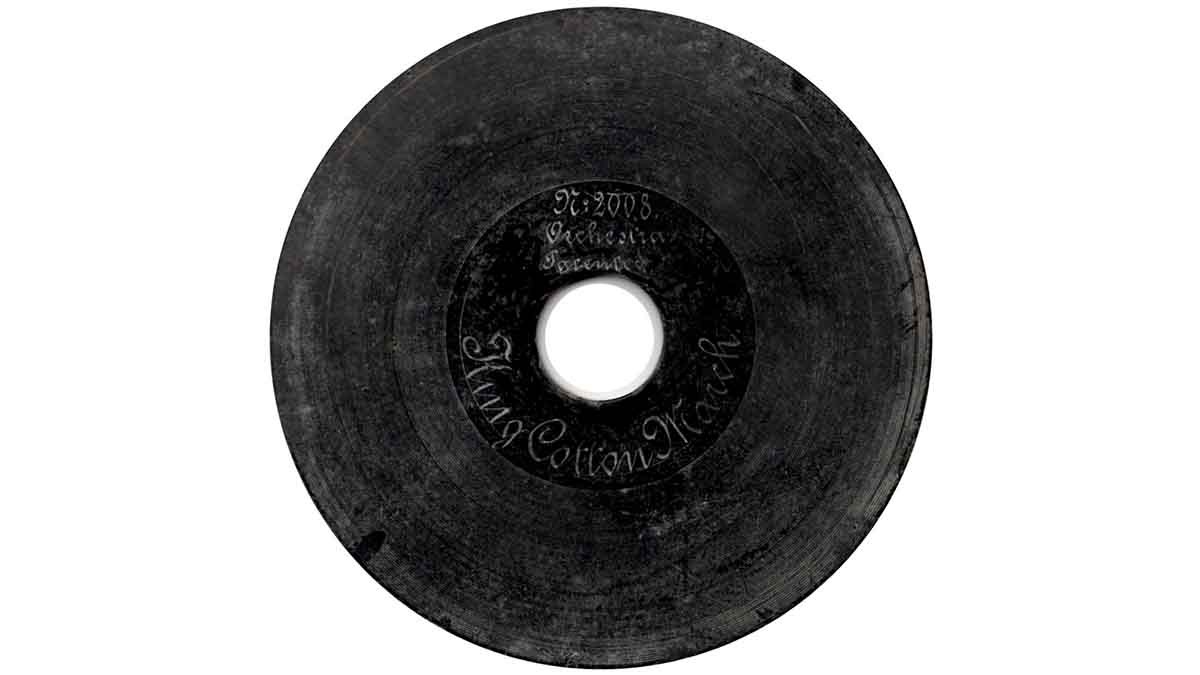
Sunshine
See Frank Andrews and Bill Dean-Myatt, FTR 56, pp458-9, 2015. At some time after 1917 – possibly as late as 1920 – surplus stocks of Coliseum records were acquired by an unknown entrepreneur, who overstuck them with a red label, occupying rather more than the upper half, bearing the legend “SUNSHINE RECORD” printed in gold. The existing titling, and the Coliseum catalogue number remained on the rest of its green label. It is possible that that the discs were jobbed off when Columbia, who had taken over the Lindström factory at Hertford, terminated, in March 1920, production of the labels that were being made there. Those were (or had been) Coliseum, Scala, Venus, Favorite and Beka. Is it suggested that any of these might also eventually turn up bearing Sunshine stickers. Alternatively, the overstuck Coliseums may have been acquired from a bankrupt factor or retailer. We will probably never know; but we can state fairly confidently, that Sunshine records are very seldom seen!
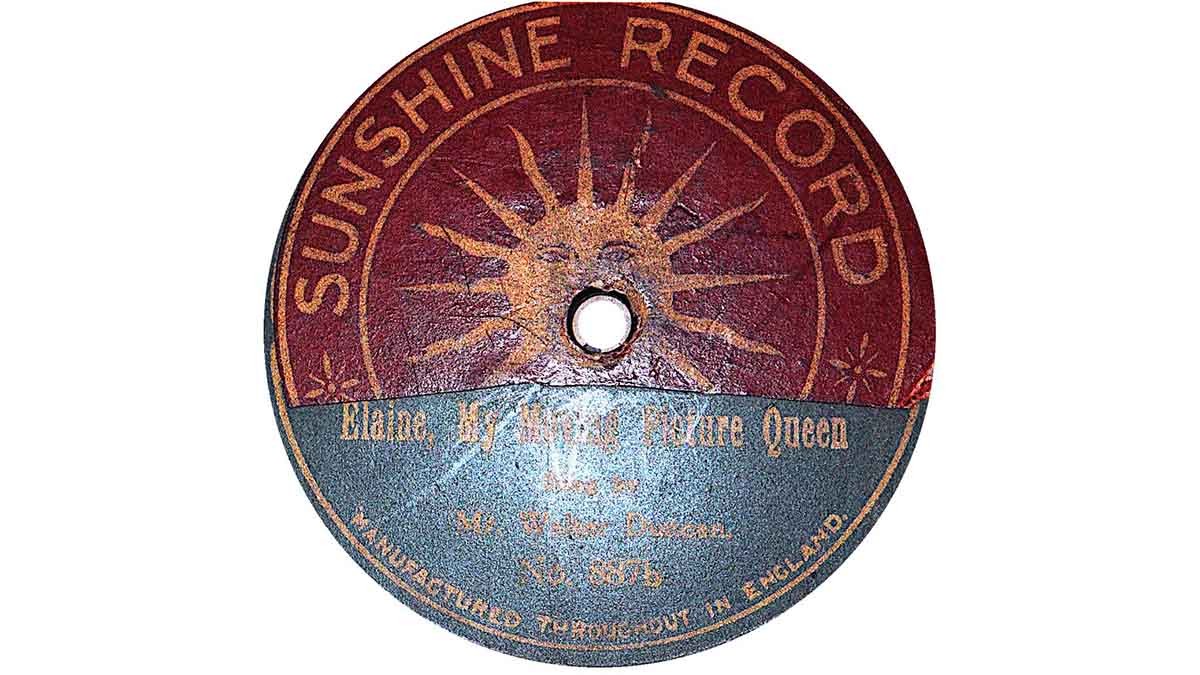
Superior
This is simply the monochrome image of a record packet having every appearance of belonging to our period of study. It is not known whether there was a make of disc called ‘Superior’, but one would imagine so. It’s such an obvious name for a record, isn’t it? Well, until one turns up, its packet will remain here waiting for it!
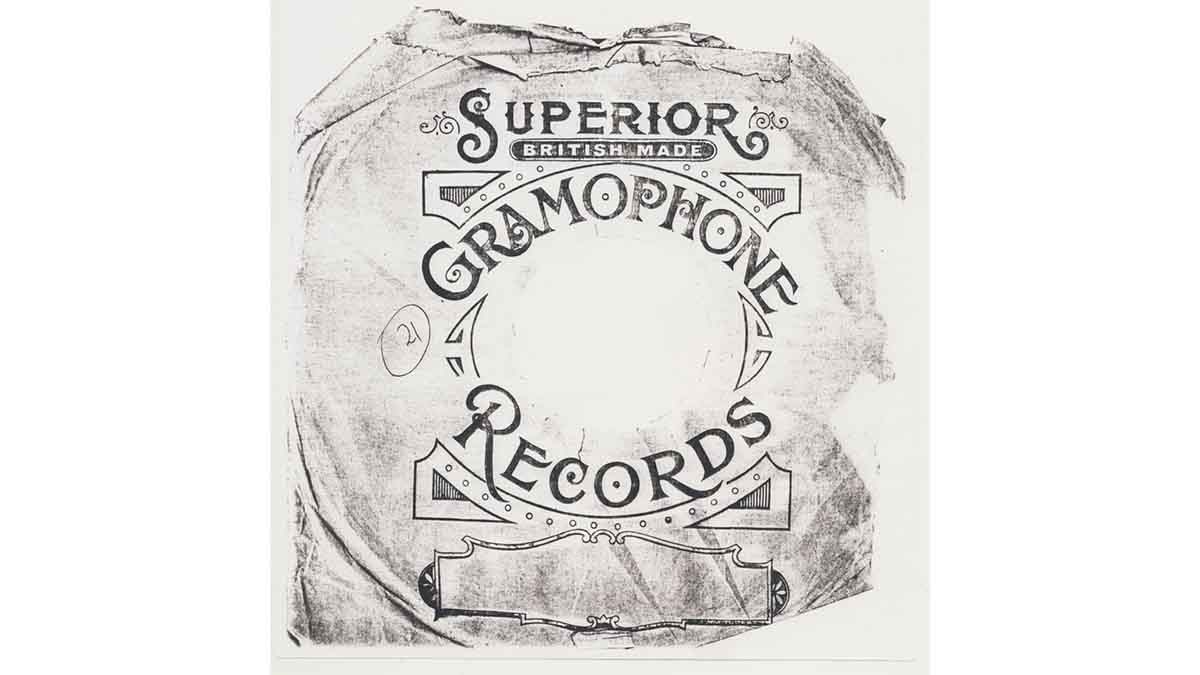
Sylva
William Dean-Myatt recently sent this extremely scarce label, courtesy of Alan Williams. Dr Rainer Lotz kindly told us that the proprietor of the label was The International Sylva Talking Record Co.; the pressings were made by the Turmalin Fabrik Derby Record Co., and distributed by Abrahamson & Winterfeld, all these concerns being located in Berlin. The labels are known in black and gold as above, and also in black and silver. There were two series: from 1 to 217 or more, and a 6200 series, the extent of which is unknown. It is not thought that 12″ (30cm) discs appeared. The sides were from pre-existing masters, of both German and British general repertoire, dating from 1910-1913. The label seems only to have come into existence in late 1913, so its opportunity to penetrate the British market would have been limited to a few months prior to the outbreak of war in August 1914, and would explain the extreme scarcity of the label. Lastly, ‘The Stars’ record (see above) has the same label design as Sylva. The reason for this is currently unknown.
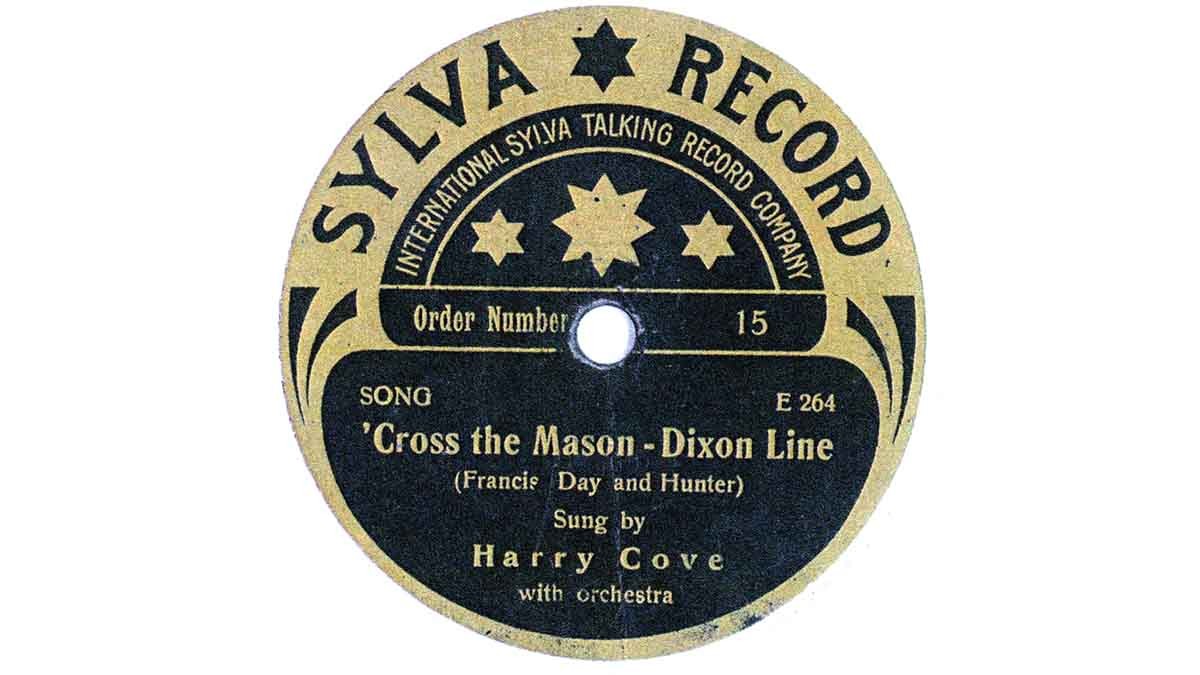
Symphony-Concert
This label was made in Germany by International Schallplatten Industrie, of Leipzig, for export to the U.S.A., as its label plainly states. And at $1, it was certainly not a cheap commodity! It is included here because this example bears a London recording by the celebrated melodeon player Pamby Dick. The claim that he recorded only for Symphony-Concert is, of course, fallacious.
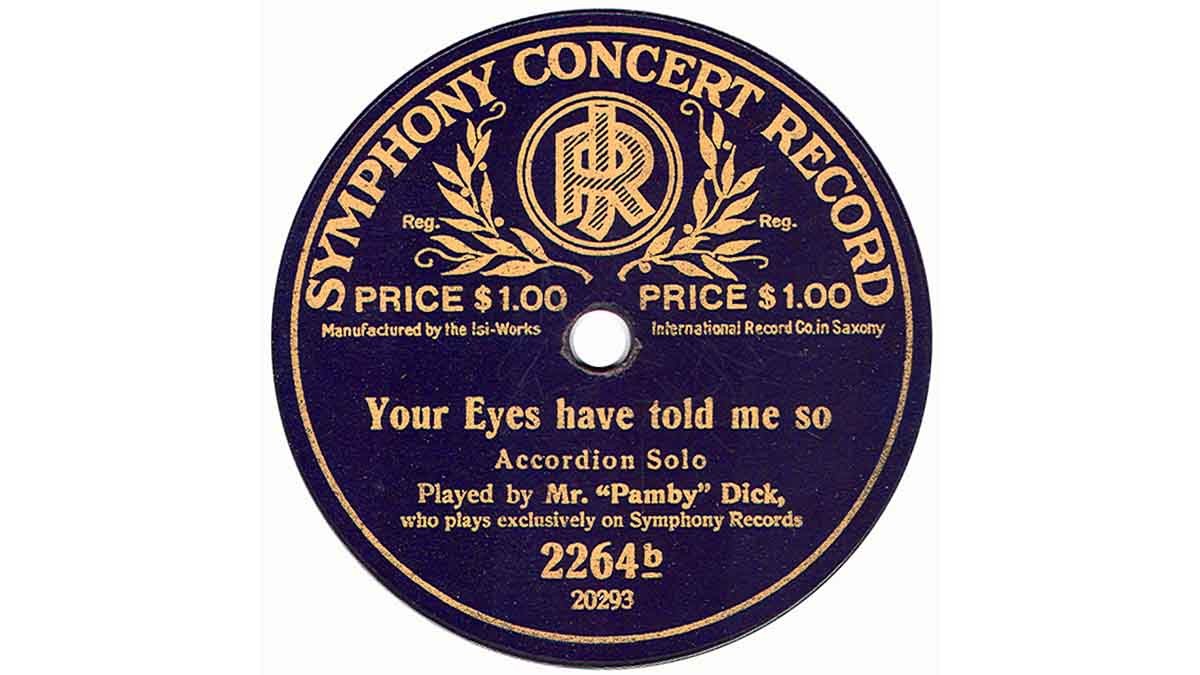
Syrena-Grand
See Frank Andrews & Bill Dean-Myatt, FTR 56, pp462-65. Frank and Bill’s extensive essay explains all, and cannot be adequately summarised here. Suffice it to say that Sirena-Grand (apparently the spelling for UK issues) was based in Poland. Though little-known in the U.K., the label was of immense importance in Eastern Europe in general, and made many thousands of issues over several decades. Their venture into the British market came very late, in spring 1914, when C F Harth and A Dub established an agency at 56 City Road. Thus they had little time for their sales to become established, before the outbreak of war in August 1914; Sirena Grands are almost never seen. The second disc above, even though credited to ‘London’, may well have been recorded elsewhere. However, the others must have been made in the U.K.; Sergeant Hunt was the principal cornet soloist of H.M. Irish Guards Band; and the chances of a comic sketch in English being recorded in mainland Europe must be vanishingly small. 30115 has ‘Made in Russia’ stamped into the wax on both sides – which, at that time period, was correct. Note also on 107, the use of Jrish instead of Irish – J is certainly rare in Germany and possibly in Poland to? (Ilco is another German-made label that looks like Jlco. ).
